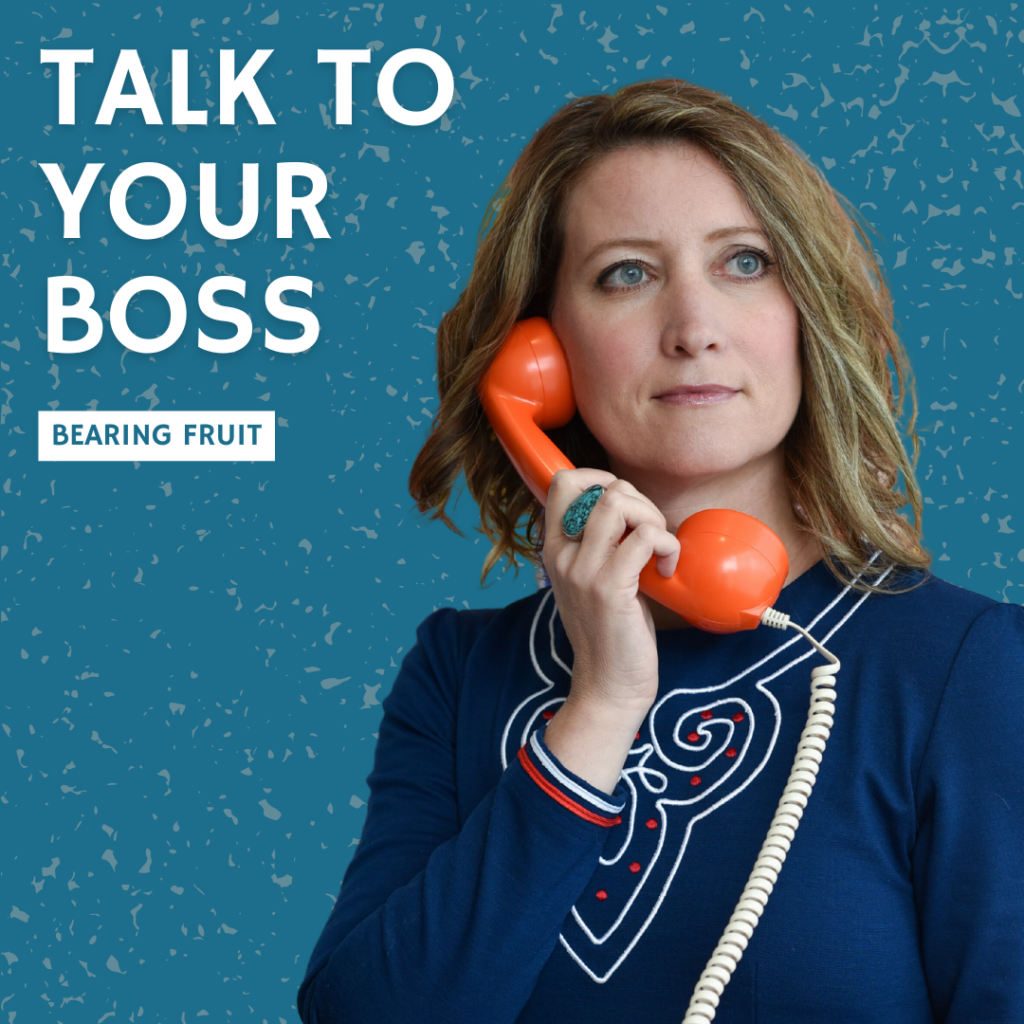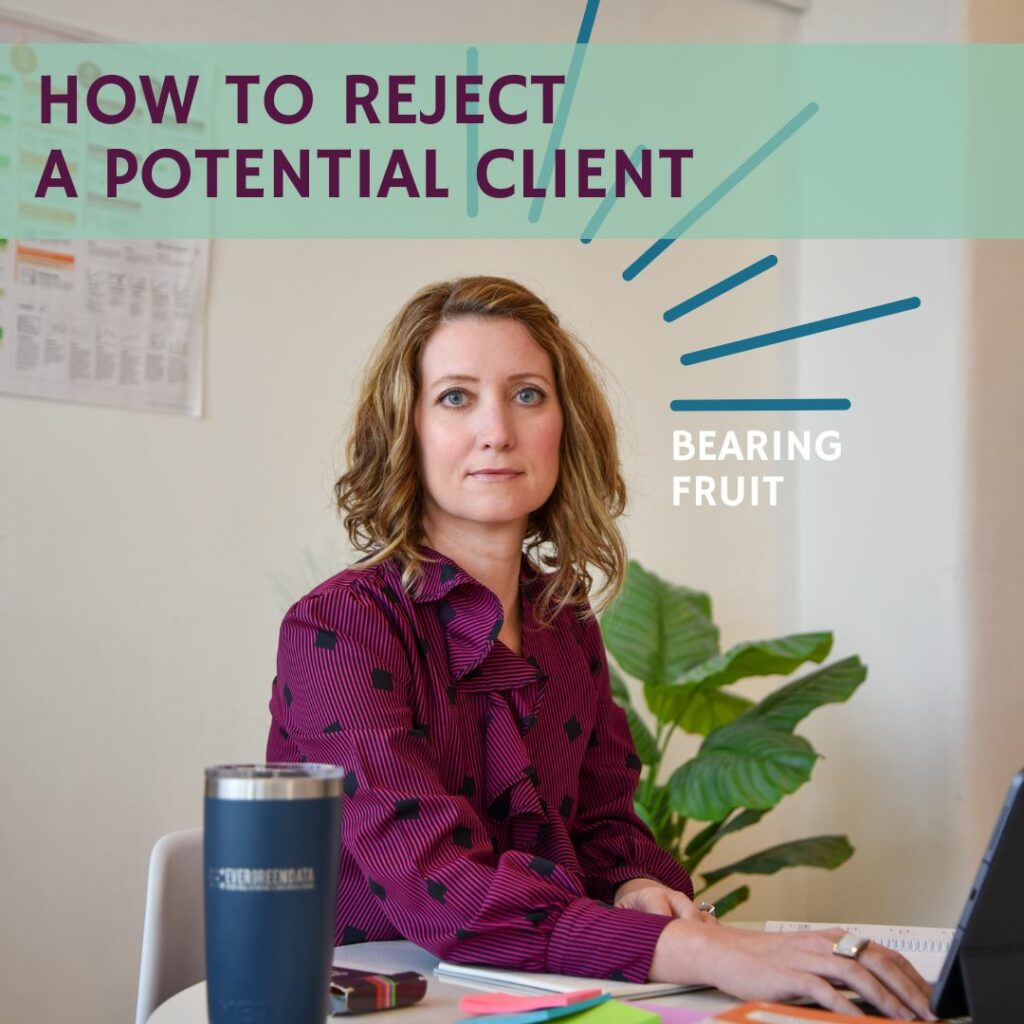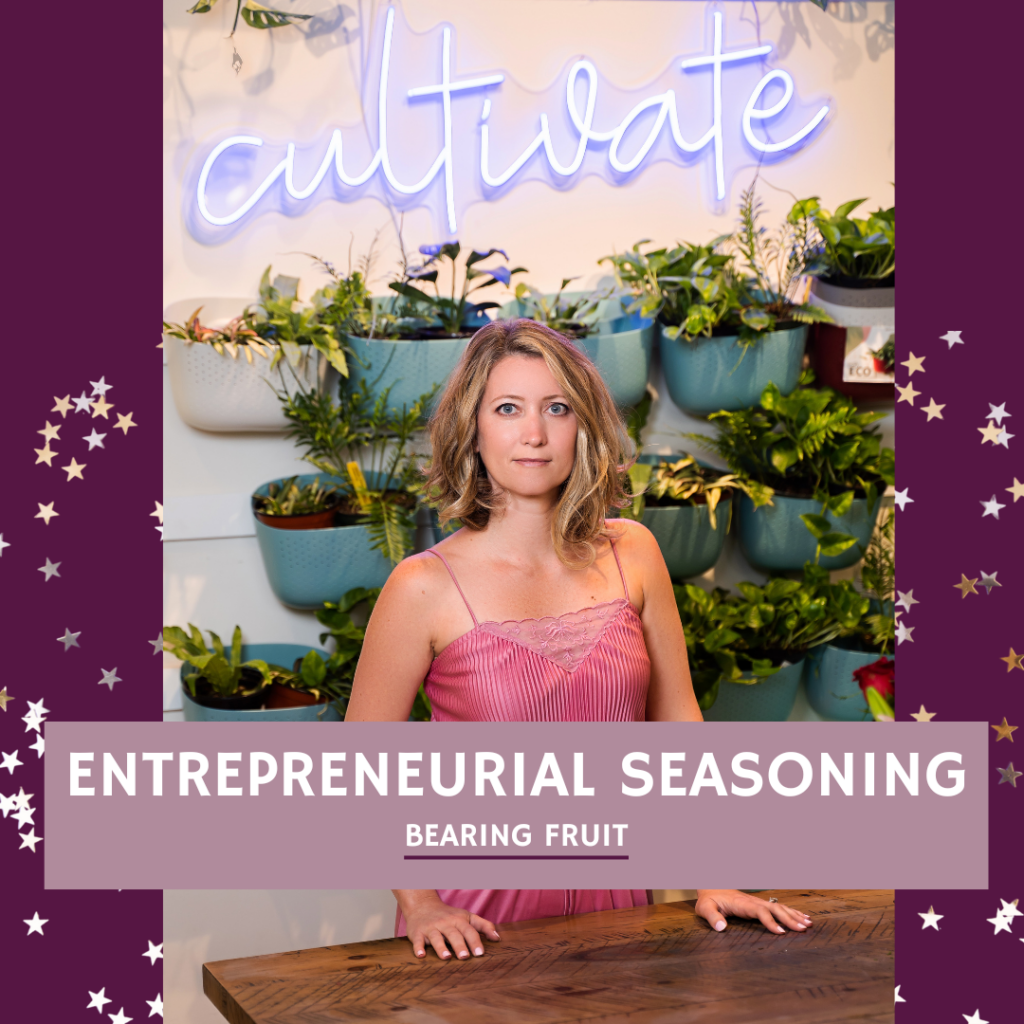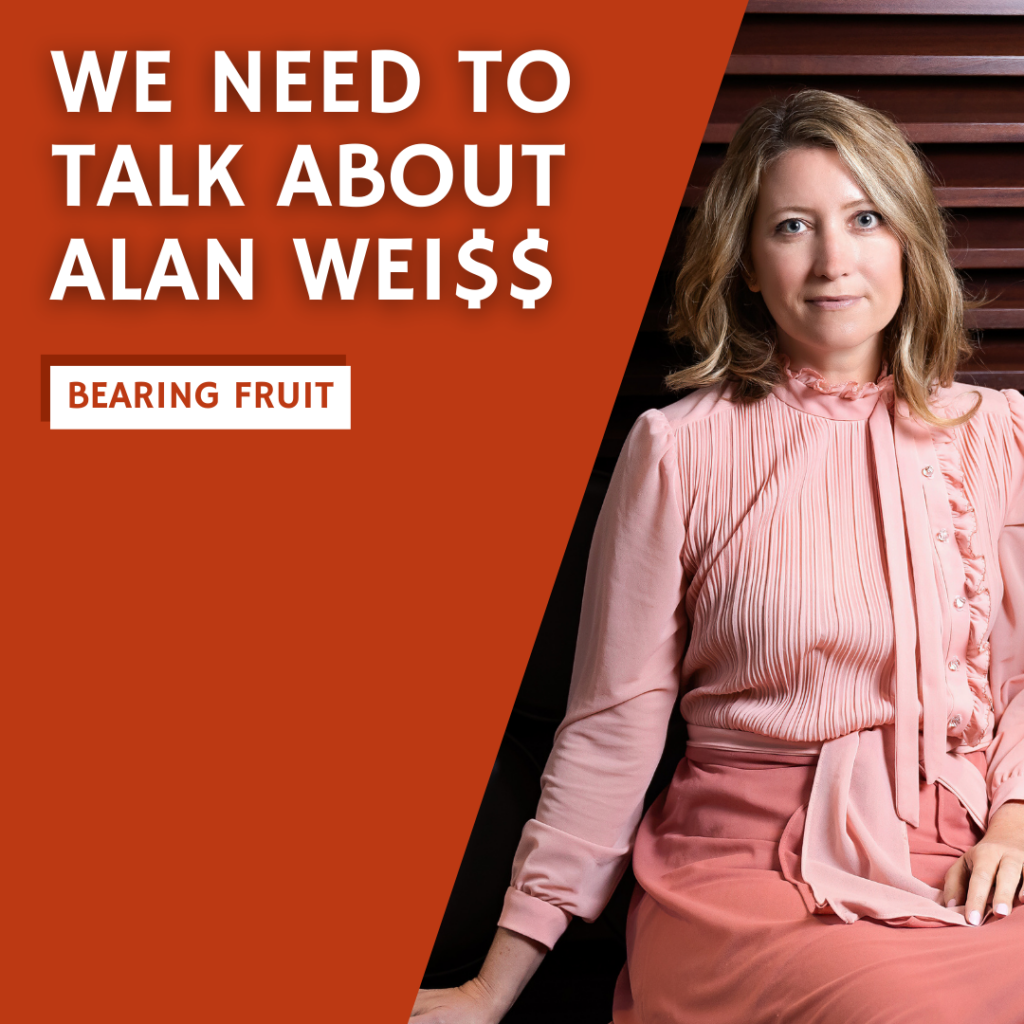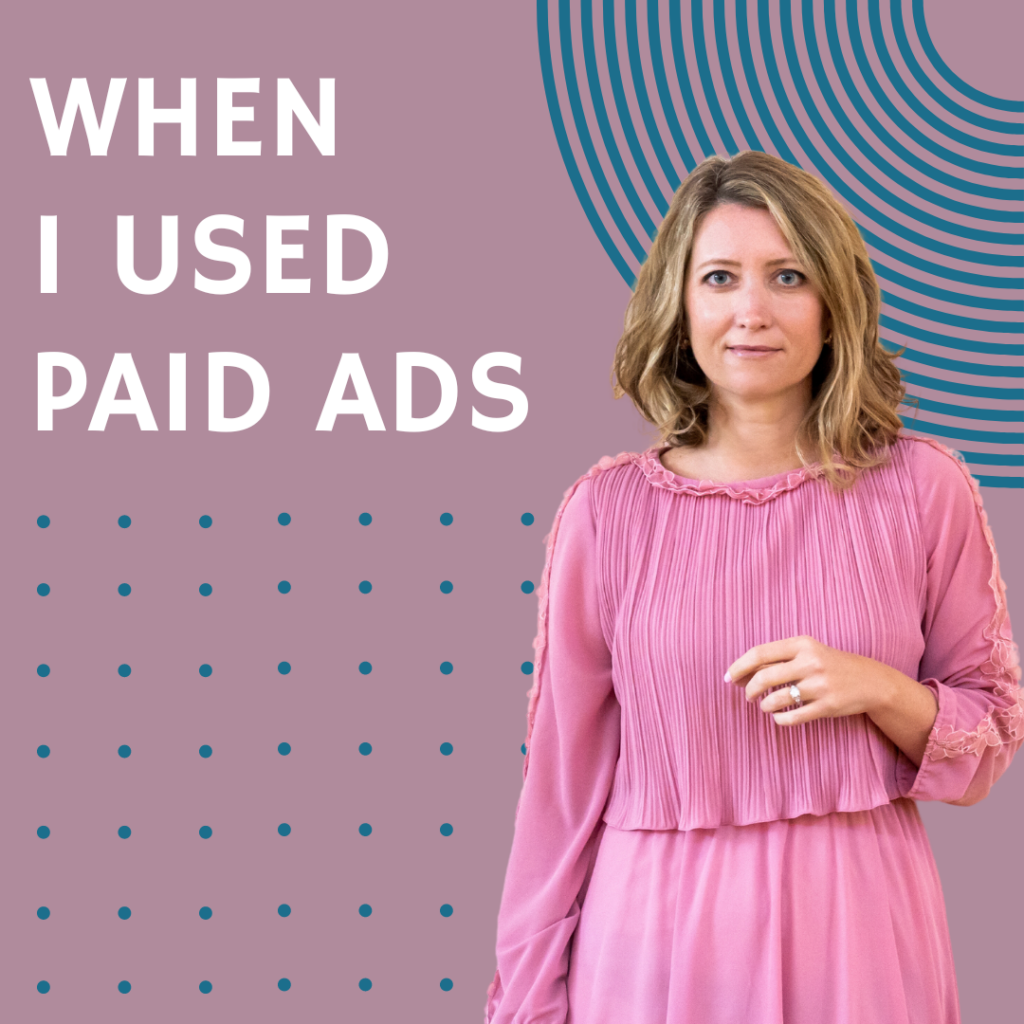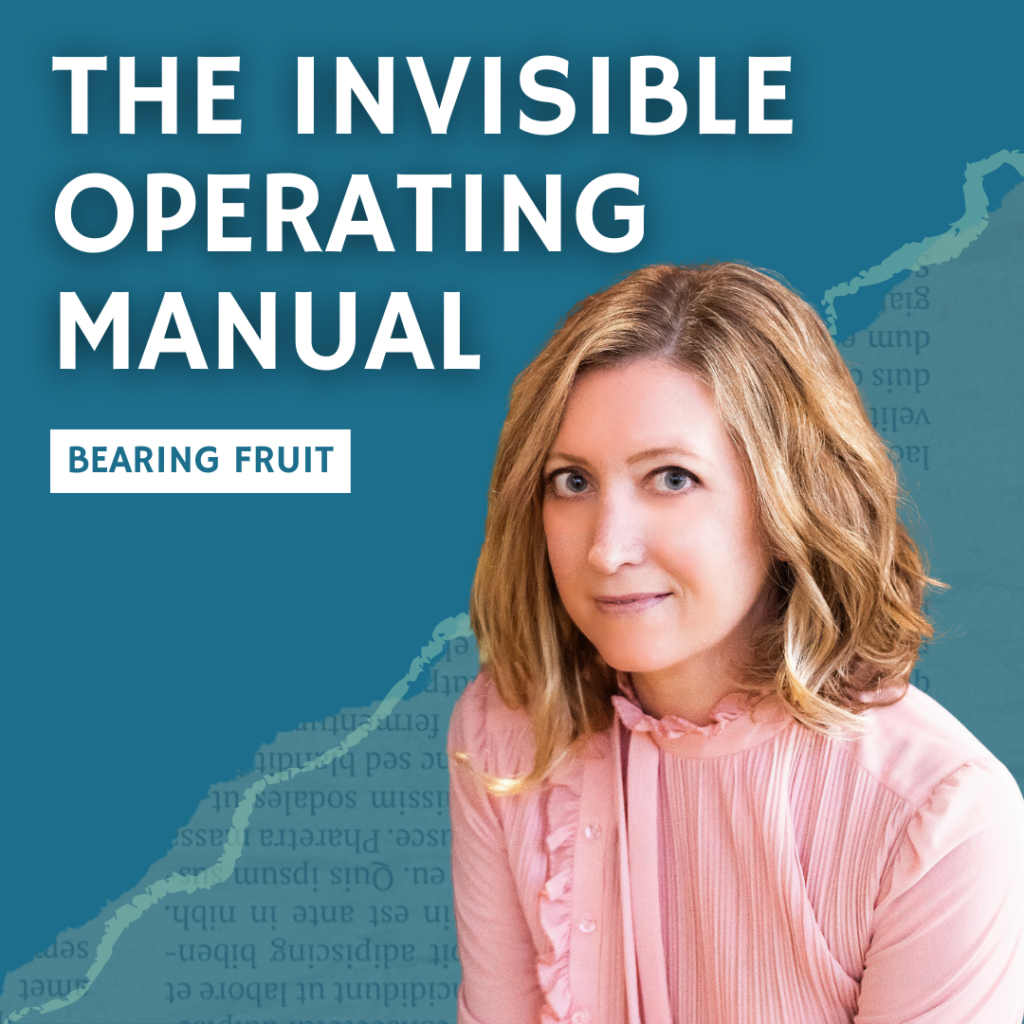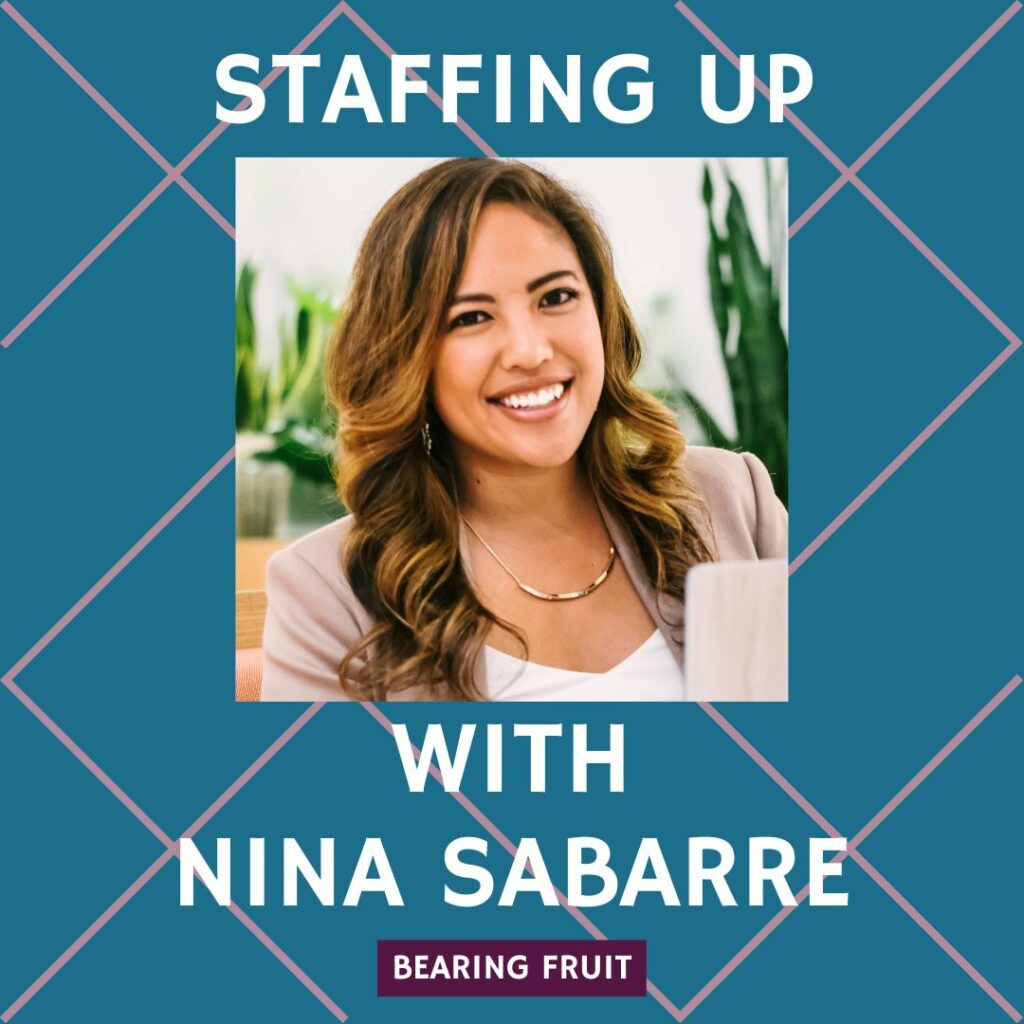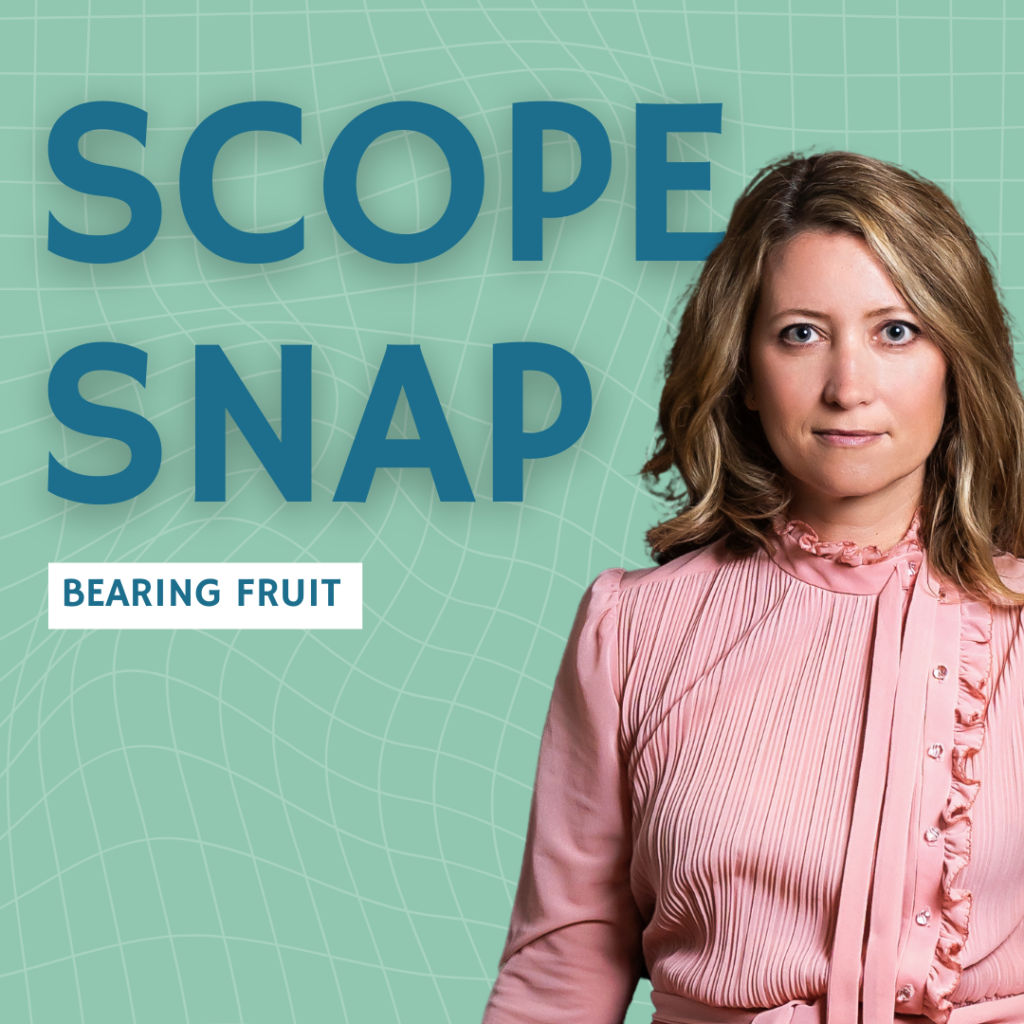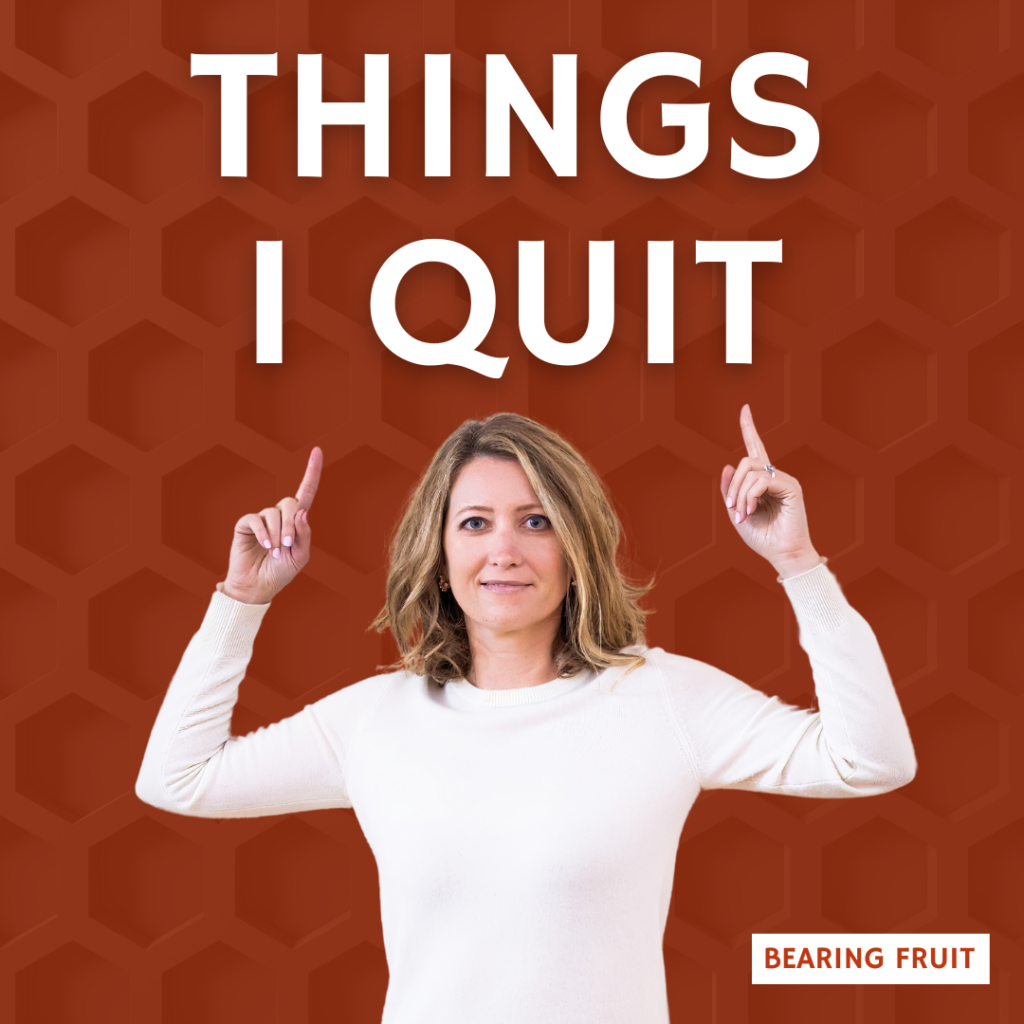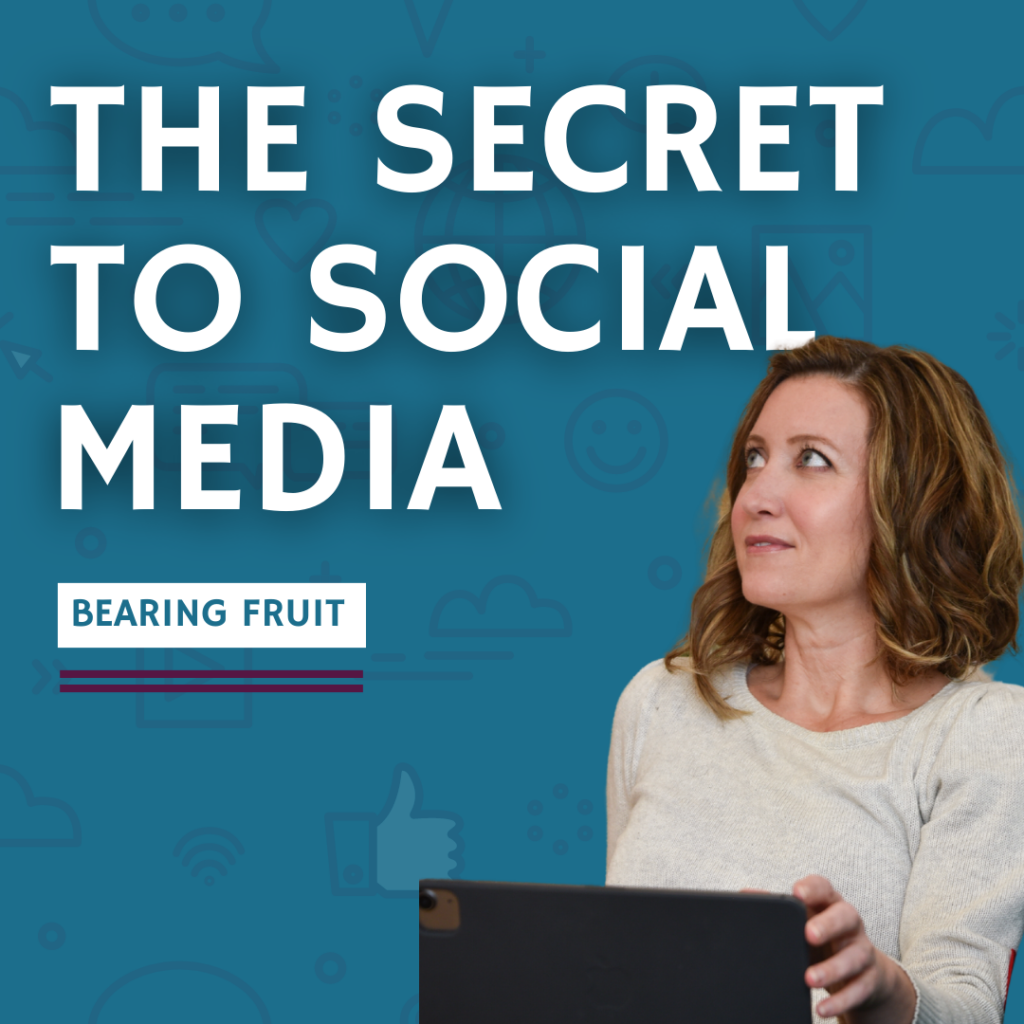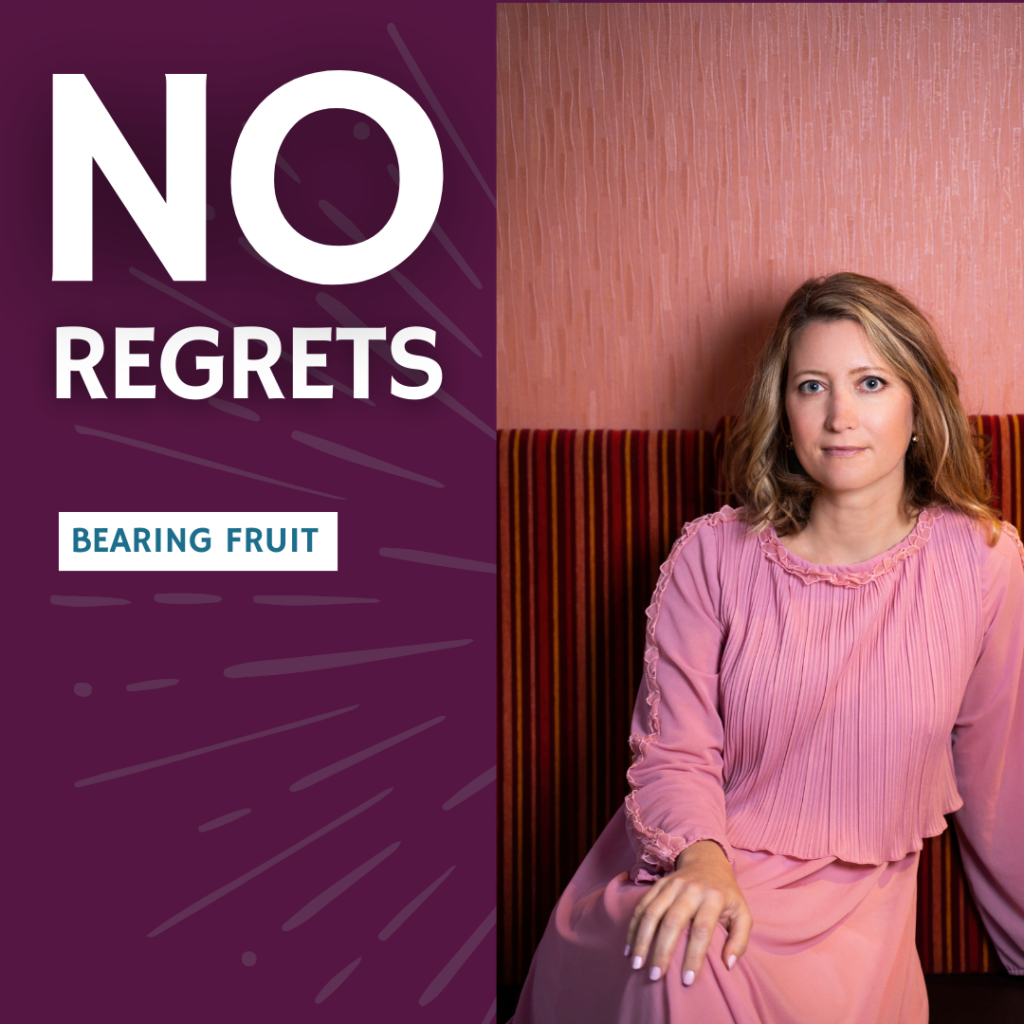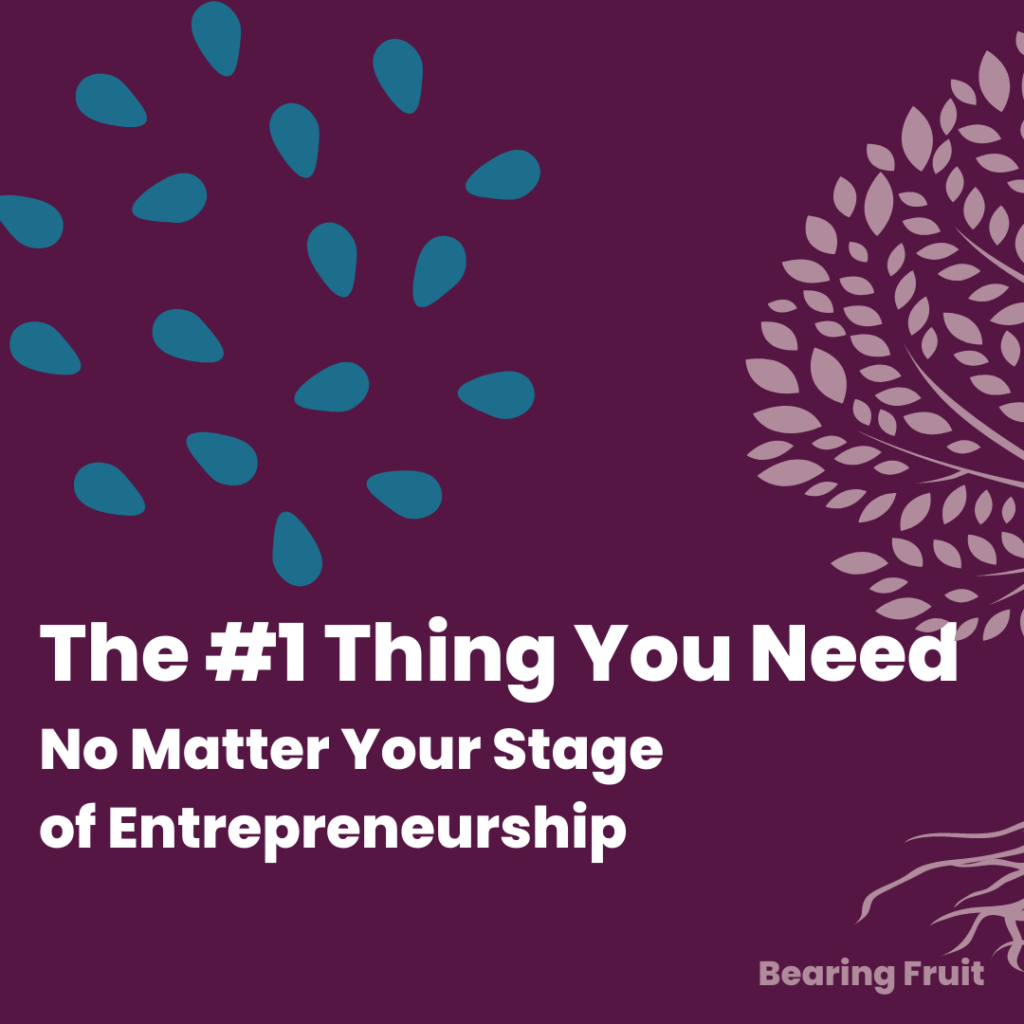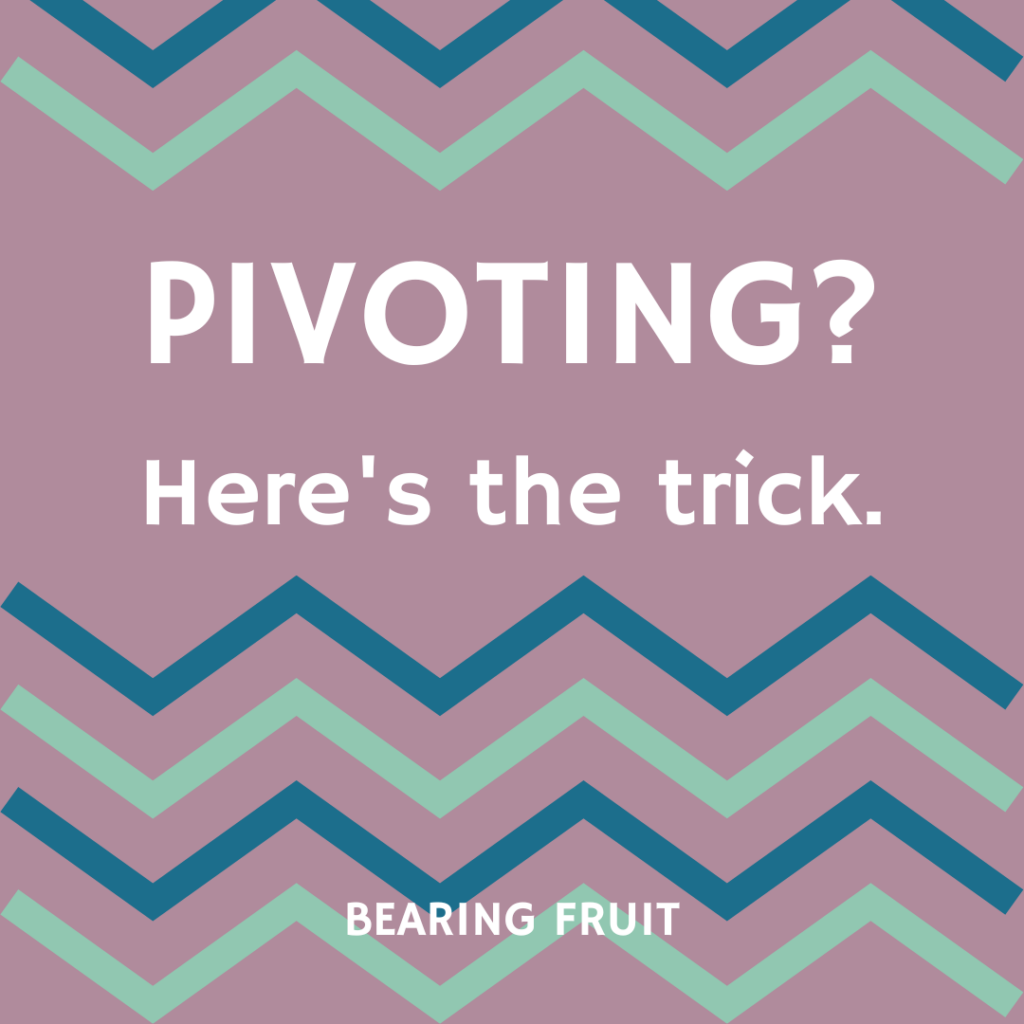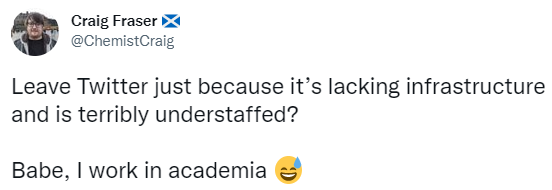You Don’t Have to Be Passionate
I know this sounds impossible, but hear me out: You don’t have to care about the product you sell.
Honey, I can hear you saying “Why the heck would I quit my secure 9-5 to launch a company if I don’t care about the product? Like, deeply care. Like, maybe even more than I care about my spouse.”
Let me tell you about an entrepreneur I know – we’re gonna call him Kevin.
In college, Kevin needed some cash flow so he literally googled “low-cost small business ideas.” He got loads of results with titles like “25 Easy Small Businesses” and the whole concept seems totally laughable to me but hang on.
He’s scrolling these lists and kinda just randomly picks one. It’s now so famous that I’m gonna make up his product for the purposes of his privacy: cheap earbuds you can gift people who insist on Facetiming in public.
Even though I think speakerphones in public should be a crime, Kevin doesn’t care at all. It’s never even crossed his mind that this is an issue.
But he launches the company anyway, constructing cheap earbuds in his college apartment living room.
They’re wildly popular, so pretty soon he’s shopping for a production facility and a warehouse. He hires management and marketing people who care deeply about how your conversation with your BFF while she’s in Portugal belongs to just you and your bestie.
The company skyrockets.
They produce earbuds in different colors. They enter into branding agreements and generate logo-ed styles. Everything’s coming up Kevin.
Is this when the plot turns and we discover that Kevin’s lack of passion for earbuds means that he never listened closely to the consumer, thus leading him to mistake after mistake?
Not at all.
In fact, when the data showed that the brown sparkle version wasn’t selling, he immediately chopped it. Even though it was his favorite.
He lacked an emotional investment that would have otherwise caused him to stay on a sinking ship.
Sometimes being indifferent to the product can give you a better sense of objectivity, a clearer mind for that critical decision-making.
Most entrepreneurs plant their own flags because of how much they love the actual work.
This is a terrible idea.
You’ll never spend your whole day just chilling in your office, grinning ear-to-ear while you just do the actual work. You’ll be sending invoices, developing systems, creating a vision, and marketing your ass off.
Going into business because you’re passionate about the actual work is a bit Pollyanna.
You don’t have to be as actively dispassionate as Kevin, but you gotta respect the way it’s helped him.
In grad school, I remember my shock as one of my fellow classmates defended her dissertation, where she hadn’t done much of the actual work. She hired out her data collection, analysis, and report-writing.
I’m like “You can get a whole PhD without actually demonstrating you know how to conduct a study?”
Her advisor said “Of course. Think about it: Most scholars aren’t out there transcribing their own interviews. They hire grad students. You don’t have to actually do the work. You have to know how to design the process and guide others to success.”
Hm.
Hmmmmmmm…….
Actually, yep.
In fact, that’s what CEOs do.
Unless you’re watching Undercover Boss, the CEO isn’t – nay, CAN’T – spend their days in the weeds, cooking the fries, packaging the earbuds, or coding the focus group data.
Instead, they have to focus on listening to customers, setting the tone, creating the culture, establishing the high-level plan, and developing the systems to stay on the pulse. If anything, that’s what Kevin is passionate about.
Earbuds could become obsolete this afternoon and he’d have the infrastructure to start up something else tomorrow.
Have I convinced you at all that perhaps a little bit of dispassion could be helpful?
If you’re still thinking something like “the secret to my success is that I care about the product” that’s ok – keep the passion. But be very clear that you’ll also need to grow passionate about backend business matters and get comfortable murdering your darlings.
No Bar, No Pizza
Summer 2023 I was one of the swarms of Americans who knocked around Italy for vacation.
Venice, though beautiful, was shoulder to shoulder with tourists. It felt like being in the world’s loveliest but most popular nightclub. If there could be fire codes on sidewalks, Venice would have set off alarm bells.
That’s why No Bar, No Pizza impressed me so much.

Trattoria al Vagon is a well-regarded restaurant, right on a canal, serving traditional Venetian food. It’s the kind of place where you need a reservation for dinner.
But they’re also on a main thoroughfare with throngs of people shuffling by shoulder-to-shoulder throughout the day. If you’re thinking profitably, it would make sense to open earlier in the day. Even all day, since these tourists are jet-lagged and their stomachs don’t know what time it is.
So they compromised a smidge and extended the hours to attract the pockets of people walking by.
And then swiftly realized these tourists have no taste.
All they want is pizza and an aperol spritz at 10am.
Would you appease this clientele even further and install a pizza oven and a bar?
It would mean more capital investment.
It would also mean compromising your quality, your reputation, your ethics – that much more.
They said no.
And posted a handmade sign in large, all caps, English language letters: No Bar, No Pizza.
Don’t even come sit down and waste our staff time if that’s what you seek. There are 100 other restaurants within spitting distance that can meet you exactly where you are.
That’s called boundaries.
Every business needs boundaries – a clear delineation between what you will and won’t do.
You need them because you were likely raised to be a people pleaser so it’s engrained into your personality to bend over backwards for every person who knocks at your door, even if it causes you back pain. And exhaustion. And resentment.
Your best path forward – the path that saves you time and sanity – is the one where you get clear about your boundaries and then communicate them very early on in the process so potential customers can self-select out if their needs don’t match your services.
You need a wooden sign that says No Bar, No Pizza.
I write my boundaries down, because otherwise I’m likely to forget that I made them. That’s how I navigated through a recent situation where a potential client asked me to teach Power BI workshops for beginners, intermediates, and advanced students.
For a day I deliberated.
Then I remembered that I’d have to stretch myself to teach those workshops and they’re technically outside of my wheelhouse. I remembered my boundaries. And I referred this potential client to a colleague.
Boundaries are how I knew how to respond to a potential client who was pressing me to schedule a workshop before the end of the year, even though I’d already told them I have no availability.
Could I have found a way to squeeze them in? Sure.
But it would have hurt. There’s a reason I already put a boundary in place about no more work this year.
So, my friend, what’s a boundary you need to put in place to protect your time, energy, and mental health? Write me with your version of No Bar, No Pizza.
Talk To Your Boss
Ryan (fake name) told me over Zoom that he was thinking about launching his own business, training dogs to walk on their front legs (fake business).
Me: Cool! When are you putting in your two weeks?
Ryan: Oh I wasn’t going to quit the day job. I just want this to be my side hustle until I can grow it more.
Me: Uh, but isn’t your day job also training dogs to walk on their front legs?
Ryan: Yes, but my boss is cool.
<red flags whipping up in my head>
Ryan: He saw some of my free YouTube videos and totally supports.
Me: He totally supports because that’s bringing business to him, since you work for him. You need to (1) check your employment contract for language around side gigs or competition and (2) talk to your boss about your plans.
Ryan: Ok yeah yeah thanks for the advice but I’m pretty sure I’ve got this.
<six months later, in which time Ryan did not talk to his boss but did announce the launch of his company>
Ryan: My boss is pissed.
Predictably so. I’ve seen this same pattern happen so many times, <insert joke about nickels and retirement>.
Margaret (fake name) got this same advice from me and said “It’s totally cool, our previous CEO knew about my side business and even encouraged me to do it.”
My dear Margaret, did you say “our previous CEO”? As in the one who is no longer your boss?
That’s like telling the cop who pulled you over for speeding that the last cop just let you go free.
Margaret did not talk to her new boss.
Margaret blasted her new business all over social media.
Margaret got fired.
Don’t be like Margaret.
Talk to your boss.
Say something like “I wanted to let you know about my plans to start a side business. I don’t anticipate that it’ll have any impact on my performance here. But I’ll be announcing it soon on social media and I don’t want that to take you by surprise.”
Be prepared with information about what your contract says regarding side work. Especially so if your side gig is similar to the work you perform in your day job.
You may have to speak to details of your plans, like your anticipated clientele, in order to illustrate how you aren’t creating a competing business.
But you don’t want to overindulge.
It’s a tricky conversation, for sure.
I’m not trying to fool you into thinking this conversation is going to be easy or clean.
It could get uncomfortable.
It could lead to putting some agreements in writing or, sorry about this, even more meetings.
Even if you follow my guidance here, there are no guarantees.
I *had* talked to my boss. I had my boss’s approval to work side gigs in writing. Girl, I had receipts!
And it still didn’t matter to HR, who told me I had two weeks to close my side business.
Their rationale: The topic I wanted to develop on the side – data visualization – could potentially become something the company wants to focus on also, at some point in the future, if they so decided one day. So, my side gig was considered competitive.
Hypothetically.
But, listen, bottom line is HR doesn’t care whether their logic is cohesive or fair. It doesn’t matter what your boss put into writing.
So why should you talk to your boss, if the conversation amounts to protection as fragile as an eggshell?
Because you’ll feel like you did it right. You’ll have gone about the process with your ethics and integrity intact, no matter the outcome.
On the other hand, don’t talk to your boss.
If you know your employer explicitly bans side gigs of any kind or you just have a boss that’s a little unhinged, don’t tell them about your plans.
You’ll be fired faster than you can tweet that you’re open for business.
Instead:
1. Build up the infrastructure of your business while you’re still employed.
2. Hoard your salary in a savings account.
3. Then quit your day job and launch your new website in the same day.
Your Summer Reading List
Friends and neighbors, over the past season of Bearing Fruit I’ve sought your advice, particularly around who you follow and what’s on your reading list. And ya’ll came through.
So as I head into my summer of less frequent newsletters and more down time, I’ve compiled your suggestions into my reading and listening list – here for your enjoyment and growth as well.
For Reading
Please purchase from your local bookseller or borrow from your library.
The Classics
Emily sent Think Again by Adam Grant, saying “I don’t always agree with everything (information in his books, blogs, social media), but he always makes me think and I love that he’s evidence-based.” Personally, I loved how this book made me change how I approach my role as consultant.
Chris, who proclaims to not have time for reading, is tucking in to Start with Why by Simon Sinek.
Susan said “Get Clients Now! by C.J. Hayden has been a useful jumpstart for me several times. I really like how practical she is and how she helps you determine what marketing cycle you are in: filling the pipeline, following up, having sales conversations, and closing sales so you can focus your efforts.”
Cheralynn is still referring to the classic Book Yourself Solid. But is just starting to get into How to be a Power Connector.
The New Wave
Eva has been loving Unreasonable Hospitality, Everything is Figureoutable, Please Yourself, and The No Club.
Rekha also recommended The No Club, which I bought based on the name alone, and Fair Play, which I’ve already passed on to many friends.
Eva also said “I’ve got Two Weeks Notice lined up on Audible” so I’m technically cheating because that’s listening and I’ve popped it into the For Reading section but Eva’s not the only one who recommended that book.
Andy is also a listener and he’s digging $100M Offers by Alex Hormozi and Buy Back Your Time by Dan Martell.
Kris’s juicy suggestions: “I LOVE Emergent Strategy by adrienne marie brown — has really helped me in my approaches to trainings and interacting with clients. I also love Zheng’s DEI Deconstructed. All about using data to support DEI efforts :-).”
Multiple times, Jen has told me I need to start reading Martha Beck’s work.
Chelsea added Happier Hour to my reading list.
For Following
When I asked for who you follow for advice, Shelby directed me to:
And I’ve been following Bridgie Casey ever since. She talks money and investing. Though she’s in Canada, her advice applies to both Canadians and Americans. I actually enrolled in her investment course, learned a ton, established my own brokerage account (because I learned what the heck that is), and I’m better set up for that generational wealth my family’s never had. I owe you a coffee for this rec, Shelby.
Autumn pointed me to Raina Sun, who specifically coaches folks from backgrounds that have been marginalized.
Jess got me following:
and:
Helen put so much color in my feed by recommending this sweet account:
For Viewing
Finally, in what may be my favorite suggestion of all, Cathy plays this when she sends out those overdue invoice reminders and I 100% love this so much:
80,000 Hours
When I was in undergrad, I met Jody Williams. She’s a Nobel Peace Prize winner who’s life work focused on decommissioning land mines. Though I typically have major celebrity anxiety, she gives off major cool aunt vibes so I felt comfortable enough to talk to her after her Q & A.
Me: Your work is so inspiring and you’re out there saving the world. But how do you actually, like, make money?
Jody: Well, the Nobel prize isn’t just honorary – you get paid.
Me: So you’re just living off the prize money?
Jody: No, I also get paid for talks like this and I consult and… why you are so concerned about how much money I have? Do I look broke?
Me (celebrity anxiety skyrocketing to an ALL TIME HIGH): I just want to dedicate my life to making the world a better place but I don’t know how to do that and also pay my bills.
Jody said something reassuring after this but I can’t remember her exact words because all the blood in my body had rushed to my face but it was something along the lines of Of course you can get paid to work in peace! There are TONS of jobs – you just have to look for them.
That’s about when I switched my major to education, thinking I’d change the world by raising the next generation to be hippies.
Now that I’m in data visualization, I still center World Betterment as one of the core business values at Evergreen Data and I screen potential clients for this criteria.
I’m confident that most of the people who follow me share this value, too.
The way I calculate it, you work about 45 years (from 20 to 65). Each year, you work roughly 260 days (to account for vacation, weekends, mental health days) and, each day, maybe 7ish hours.
That means you’ve got 80,000 hours of a career.
How are YOU going to spend that time?
There’s actually a website that I wish existed back before I embarrassed myself in front of Jody Williams.
The site is full of resources but I believe its biggest gift is the pause it prompts.
On the one hand, 80,000 hours is a ton of time.
This is great because changing the world is a slow slog. Rewarding in the end but jeez it takes patience.
On the other hand, 80,000 hours whips by. I’ve spent one just writing this letter to you. You could spend another digging in to the website.
The podcast episodes and case studies show that Jody was so freakin right – there are so many paths to peace.
And if, upon reflection, you feel like you’ve spent some fraction of your 80,000 hours working on something that isn’t exactly contributing the way you want, there’s a list of the world’s most pressing problems AND job board. A job board!
Of course, you can always do what I did and make yourself a job that adds a lil something to world peace, too.
Every day isn’t going to result in a paragraph of your Wikipedia entry. Jody Williams surely spends some of her hours just trying to tame her inbox and update her software.
But at the other end of the long arc of your career, what do you want to say? What’ll go on your career tombstone?
Write to me and fill in this blank. Here lies the career of ____________, who spent their 80,000 hours ____________.
How to Reject a Potential Client
“How do I say no to a potential client? And how do I tell that it should be a no?”
– A Bearing Fruit reader
How to Tell It’s a No
Speaking just for myself, it’s an easy no if the request is outside of my wheelhouse or my availability.
But if it is aligned with my skills and mission AND I have the space in my schedule, I then check that the project fits these three criteria: fun, lucrative, and no assholes.
You have to make up your own criteria, of course. Just like you had in your dating days, you need a red flag list for clients.
But also, it might just feel bad. Like, the project or the client isn’t ringing any specific alarm bells but your heart or your gut is just saying no. That’s perfectly fine. Trust your spidey sense.
How to Actually Say No
Ah yes, the hard part. The reason this is hard is because you have to be honest – without oversharing.
If you say “I’m all booked up!” you may experience exactly what happened to me (as described in this fun podcast episode) – the potential client (who was an asshole) wrote me back to ask when I’d be free.
Saying no after that is extremely awkward – so much so that if you have any people-pleasing tendencies whatsoever, you’re likely to say “in two weeks” and now you’ve got yourself an asshole client.
On an Office Hours call with my Boost & Bloom students, someone with a very well-established business (you’ll notice I don’t name names of my students or my readers – we follow The Chatham House Rule) gave the best answer “We’re not a good fit.”
This is the best reply because it’s hard to argue. The trick is to stop there. Don’t start explaining WHY you aren’t a good fit. People socialized female will especially feel compelled to make the other person comfortable, so we’ll justify the mis-fit. But the more you talk, the more you leave yourself open to be countered.
If you feel you must, you could provide a recommendation. But that’s not a requirement. You aren’t a match-making service.
You can just type “Thanks so much for reaching out. This project isn’t a good fit for my company. Best of luck in your pursuits.” Hit send and go about your day.
If they write back, don’t panic – smile. It’s great! Because it’s validating your initial assessment: People who push back against a no are assholes.
Do not reply. Delete without guilt. People show you who they are. Listen and act accordingly.
This may be one of the shortest Bearing Fruit newsletter editions because the answer is brief. It’s the emotional effort to get to that brief answer that takes time to work through.
Entrepreneurial Seasoning
When I taught a free class on making more inclusive data visualization, I got a TON of responses that fell into one of three buckets:
- This class was AWESOME!
- I missed the class, where is the recording?
- This class was terrible, you were wrong on all these points, being exclusive with these suggestions, and neglected to mention these ideas.
It’s how I respond to the third bucket of comments that let’s me know what season I’m in with my business.
Expand or Contract Audience Season
My response, at that point in time, to the five paragraph paper of an email with bolded headings and numbered lists detailing my misgivings… was a chuckle. It’s nice that people are so passionate about such an important topic, I thought to myself.
I was in a season of wanting to expand my audience by offering new content, pushing people’s thinking, and getting comfortable being a lil controversial.
Without a doubt in my mind, I have also offered new, lightly controversial content in the past, where I got responses in all 3 buckets and my reaction to bucket 3 was fuck this shit.
I had been putting myself out there when I was in a contracting season. Good intentions, wrong timing for my spirit. All I wanted to do was scream I’m trying my best and If you don’t like it, go elsewhere – this was a FREE class.
That’s vastly different than a chuckle.
As important as it is to show up in the world with consistency, I’ve learned that I also have to watch out for changes in my seasons. Heck, I had to learn that I actually have seasons.
We all do.
Audience growth seasons are one version, but we go through others, too.
Expand or Contract Staff Season
When my staff finish a workshop and get an email like “It was truly one of the best and most practical training courses I’ve taken during my career.” it feels SOOOOoooooo good. Me and my staff just doing this at each other over in Slack:
I freakin LOVE having a team that can help me reach more people and get more good data viz out there in the world.
Teams bring a bigger impact.
You know what else teams bring? Problems.
Needs.
Management.
Which – of course! They need guidance from the boss. Makes total sense.
Despite ever better systems and procedures, from time to time I still end up being an absolute bottleneck for my business.
One option is to hire more help, like a COO, and expand even further. This is what Nina did.
It’s also perfectly ok to decide that sounds like too much work.
I’m not a great manager. I don’t even want to manage. I want to be the one in every workshop, passing out the high fives to my students. I have my seasons where I want to shrink the team and be a one-woman show.
But then I think about all the people I wouldn’t be able to help… And it’s like that, back and forth, forever.
Entrepreneurial Seasoning
You can probably identify other areas of your business where you catch seasonal feelings. Like growing or whittling the services you offer.
If you’ve only been in growth mode so far, hang on – winds will shift. That’s not a bad thing. Mary Poppins came in on a change in wind direction, after all.
Jereshia Hawk made a great point on her podcast: If you’ve only seen growth mode and your revenues have been jumping more than 30% each year, you might need to make yourself take a maintenance season.
Seasons can last months. Or hours.
It’s so tricky. So here’s what to do:
Recognize when a season is changing. You can usually tell by your reactions to common events.
Recognize that this is just a season. It won’t last forever. Take advantage of the season you’re in, while you’re there.
Do you have different seasons than the ones I listed out here? What season are you in right now? Email me – I can relate.
We Need to Talk About Alan Wei$$
I don’t like trash talking people. Publicly. Come to my house with some guacamole and I’ll make margaritas and tea all day.
But this one feels important.
Like so many beginning entrepreneurs, I was advised by well-meaning, more established friends to seek the counsel of Alan Weiss. He’s the Million Dollar Consultant (TM). He’s the consultant to consultants (TM). He’s prolific and heavily trademarked.
This dude’s work appears in every Top 10 Books for Entrepreneurs list.
He has enough decent advice to fill one book. But his publishers know that suckers like you and old me will purchase anything he produces so he’s got a string of books, all very slight redigestions of his first.
I’m not linking to his work here because I think he’s trash but if you’re nosy, he’s easy to find.
Some of his philosophy sticks with me today. I remember how he sells the idea of working from anywhere. Take a prospective client sales call from Tahiti. Why not? In this digital age, we entrepreneurs have the advantage. Just be able to turn around a proposal in 24 hours.
He’s right. A few years back I hit send on a contract worth $60K, then closed my laptop, picked up my mai tai, and smiled at the ocean. It was as awesome as he said it would be.
So what’s the problem?
A Bearing Fruit reader said it best. When I wrote about Things I Quit and asked yall to tell me what you quit, I got this reply:
“I quit comparing my business to others and reading business books by self-aggrandizing white men like Alan Wei$$.”
Yup.
This dude’s ego is so gross. After all, his social media handle is the name of his favorite luxury car. The cover photo on many of his books: him, grinning ear to ear, leaning on the hood of said luxury car.
It’s bravado and machismo and that’s not the model I want to follow. Back when I started, I didn’t know there was another way.
He calls himself the Contrarian Consultant (TM). As if his notions somehow go against the grain. They don’t. In actuality, his use of the label “contrarian” here just means he gives himself permission to be a total jerk.
I don’t follow him but somehow this ended up in my feed on LinkedIn. Resham, who is no longer on the platform, posted a pretty innocent poll.
![Resham posts a poll, prompting people to test their grammar by filling in the blank for "I'm sorry - I didn't [blank] to disturb you." Alan Weiss comments "...intend to disturb you with another inane poll." It has 23 likes.](https://theevergreenempire.com/wp-content/uploads/2023/03/alan-weiss.jpg)
Do you see his response? WTH?!
And what world class consultant (TM) spends time trolling randos on social media?
AND so many people blindly follow him that no matter what he posts, even a rude comment, he’ll get likes and endorsements.
The first lesson here: Punch up. If you’re gonna publicly trash someone, do it to those who are way above you (like I’m doing right now). When big names punch down, it’s like a high schooler beating up a first grader. You’re a bully.
The second lesson: You’ve gotta be discerning about the people you follow. Sure, the advice might be good – but if they have the personality of a hot baby diaper, some of that will stick to your ribs, too.
You know how people say your personality is the average of the 5 people closest to you? It’s kinda the same for who you choose to follow. Choose wisely (not Weiss-ly), ok?
To take that just one step further, who you like and endorse on socials actually does matter. For example, if you’ve been warned that that one dude is a creep but you keep collaborating and promoting his work on your platforms, you’re a creep by association.
I know that for many people of color and white women, we felt like we haven’t had much of a choice. Self-aggrandizing white men and our proximity to them has historically been how we’ve been able to protect our own status and progress.
That’s how we end up with 51% of white women voting for Donald Trump. They don’t necessarily love Trump. They’re reliant on their white husbands for their livelihood.
We can choose a different model. I hear the risk involved. The risk is lessened when we stick together.
Here’s the bottom line: Let’s stop supporting a$$holes.
What business books are you into these days? I’m reviewing a few right now. Email me with your best suggestions and I’ll compile a list.
When I Used Paid Ads
For the very longest time, I thought paid ads were for people who hate money. Business is good, I thought, I don’t need to PAY people to get me more clients.
But.
I’m a data nerd. I love to run an experiment and see what happens.
So now here we are, on the other side of a lengthy ad campaign, analyzing the results.
Up to this point, my main marketing strategy has been organic. Meaning, if people find me, it’s through something I made on my own, like a blog post, a YouTube video, or even word of mouth.
Organic marketing is a PUSH.
You push your content out there and hope to the heavens that (step 1) it’ll land with the right people and (step 2) they’ll want more from you.
Paid advertising is a PULL.
You identify your target audience and put your ads right in their faces, actively pulling them into your orbit.
Like Paula Abdul and MC Skat Kat, these two opposite forces can work magic together.
If you take a strategic approach.
While there’s no one right way to market, Liz at LLY Communications is a genius at figuring out a strategy specific to each client that produces the biggest bang for your buck.
Early on in our work together we noticed something huge:
When we posted ads for one of my online courses, it didn’t get much engagement. Few people clicked, fewer people signed up. Each signup, therefore, was pricey.
When we switched the ad strategy to focus on something free, like one of my blog posts, engagement went up. A lot.
Which makes our ad strategy relatively inexpensive, but puts more emphasis on that potential client’s post-ad-click journey.
This means (for us, anyway, at this particular moment in time) the real work comes in taking people from reading a free blog post to enrolling an online course. Seems like a situation with high creep factor. Shall we blast a pop up over the blog post? Ew, so annoying.
Strong organic content is the magnet that keeps people in my orbit.
Paid ads are like your billboard and organic content is like your famous brick chicken recipe that keeps everyone coming back.
Liz could tell my organic content was strong because of:
- The size of my clean email list
- The open rates for my emails
- How many of yall write me back (this is my favorite part)
- Website hits on my blog posts
- The sheer number of blog posts I’ve written over time
Do you see indicators in that list that reflect both quantity and quality? That’s a strong organic content game, Honey.
Once I had pulled people into my orbit through the ad, I was able to keep them there, exploring my website, reading other organic content, signing up for my newsletter, getting curious about my online courses.
Companies who don’t have strong organic content have to sink a ton more in paid advertising because they need to get way more eyeballs since they’ll convert a far smaller percent into actual customers due to no magnet. Make sense?
I can really only speak for my own experience here (though this likely applies to you, too): Investing the time and energy into organic content is critical.
Hold that free class.
Start that newsletter.
Fire up that podcast mic.
Launch that YouTube channel.
PUSH.
It takes a while to build up the breadth and depth of organic content that acts as your track record of being stunningly helpful. This is absolutely about playing the long game.
One day, when you’re ready to PULL, you’ll have magnets in place that prove to your potential customers that you’re not just some flashy wannabe influencer. Your concrete organic examples will show your value and make people wanna stick around. That’s how people will know you’re the real deal.
The Invisible Operating Manual
The Protestant work ethic is so deeply ingrained in American culture that it’s hard to even know you’re operating according to its instructions. Like the fish who doesn’t know it’s in water. Swim with me and let’s identify the fluorescent-colored rocks that have been making up our belief systems about how we work.
I’m not necessarily saying any of these Protestant traits are bad. If you’re Protestant, do you. I believe it’s incredibly helpful to understand the indicators of the Protestant mindset that have influenced our collective psyche so you can decide for yourself if these notions are helping you or getting in your way.
Work should be hard.
This is the root of no pain, no gain. If it doesn’t hurt, you’re lazy.
Hard work is part of the same United States mentality that allows people to go unhoused and unsupported; the thinking is that they should have just worked harder.
I know you’ve got a big heart so you don’t think that about the people you see on street corners with cardboard signs. But how often have you chastised yourself with that same thinking – I should have just worked harder.
Another important component to this ethic is that money should only come through blood, sweat, tears, exhaustion, sacrifice, and at the expense of your mental health and relationships. That if you make a lot of money and you’re only working 20 hours a week, you’ve cheated. Gain without pain is unethical.
But yall… look where that’s gotten us *gestures wildly at everything*.
Pay your dues.
Work your way up the ladder. Start as a junior assistant, work 80 hours a week for two years and become assistant. Two more years to senior assistant. I was sold a similar tale when I worked at the university. But then one day I realized there are 10 senior research associates all eyeing the one deputy director position, so…..
But gosh the university sure benefitted from our labor by selling us that Pay Your Dues story.
It’s this thinking that casts a side eye toward the young entrepreneur, questioning her gall and experience. As if she hasn’t put in enough hours to earn a CEO title.
Look, there’s a grain of truth here right? You do get wisdom with experience. But hours of butt in chair does not equal experience. It’s what you do with that time.
Save what’s left.
Protestant work ethic says that your job is your calling. You should dedicate all of your energy to it because, they think, this is what God wants you to do – it’s what gives your life meaning. Of course this leads to burnout.
It also means you shouldn’t engage in other activities. Like a personal life. Cause that’s outside your calling.
So if you do have some extra cash on hand, squirrel it away. Don’t invest in your rest. Don’t take a class for your personal growth. Don’t upgrade your quality of life.
Save What’s Left is also tied to the Protestant work ethic of self-denial. You come last. This explains why so many fresh entrepreneurs don’t even pay themselves.
Reward is in the afterlife.
The whole deal is predicated on this promise: You toil your tushy off because that’s how you show God you’re worthy of heaven. Whether or not you believe in heaven, a similar promise shows up in Pay Your Dues. And the whole notion of retirement.
Can I be honest? I’m a little scared of retirement. Because everyone I know who is retired 100% bought into this Protestant work ethic and as far as I can tell, it kinda sucks.
Sure you have more time to spend with the grandkids and that’s super cute. I just don’t see that many retired people who are truly, deeply happy and living the life of their dreams. They’re tired. Cause they worked 80 hour weeks and didn’t make time along the way for the things that actually create a happy life.
Is this what you want?
These ethics are the building blocks of capitalism and exploitive labor conditions. These ethics define that middle class American lifestyle that takes a vacation once every five years and has 2.5 kids. And, again, no judgies if that’s what you want.
I just want you to be aware that the definitions of success come from a very specific perspective. They aren’t universal. They definitely don’t work for everyone. And they probably have seeped into your internal narratives and it’s ok to question whether those are subscriptions you want to keep active.
Staffing Up
Entrepreneurs who have the seed of an idea for a business ask me questions like How do you take the leap? and How do you get your first client?
Entrepreneurs who are sprouting have cleared those hurdles. Looking back, those seed stage questions are heart-warming: they’re real and sweet and entirely solvable and my gosh how quickly those worries morph into other pressing questions.
Sprouting entrepreneurs wanna know how to manage the massive incoming workload and how to staff up – carefully.
Nina Sabarre‘s sprouting business must have been sprinkled with Miracle Gro. Intention 2 Impact is only 4 years old but she’s already amassed huge clients like the Chan Zuckerberg Initiative and a deep bench of team members. In this quick interview, I wanted to ask Nina how she staffed up with care, while all that growth is still fresh in her mind.
STEPHANIE
Who was your first hire? And how did you know it was time to hire them?
NINA
My first hire was myself! After three years in business, I transitioned Intention 2 Impact from a Single Member LLC to an S-Corporation — which required me to become a W2 employee with a salary. In addition to tax benefits, this helped me prioritize paying myself monthly.
My second hire was equally important. I realized that I cannot sustainably scale I2I alone, so I brought on a business partner and Chief Operating Officer (COO).
STEPHANIE
Say more about that. What exactly does your business partner and COO do that you couldn’t do on your own? How, exactly, are they helping you scale?
NINA
My goal is to build a premiere, next-generation social impact consulting firm, and I have always known that I cannot do it alone. My business partner, Dr. Kathleen Doll, is the yin to my yang! As COO, she oversees the internal, daily operations, which allows me to focus on the big picture strategic vision of the company.
Stephanie, remember in 2020 when you encouraged me to take the Clifton Gallup Strengths Finder assessment? That is when I realized that my core strengths are in vision, strategy, and influence, and I am lacking in execution. Kathleen’s strengths are complementary to mine – which makes us an unstoppable team!
STEPHANIE
Yes! Ok but can you give some specific examples of internal daily operations vs big picture strategic visioning? You aren’t sitting around just thinking all day, are you?
NINA
I wish! At the beginning of each year, I put together our annual business plan (leveraging last year’s data and in alignment with longer term goals). In the plan, we identify SMARTIE goals for five categories of business: products & services, operations, finance, business development, marketing.
Kathleen owns the products & services and operations goals (i.e., what we do and how); and I own the finance, business development, and marketing goals (i.e., how we build to sustain what we do — rooted in our ‘why’).
In addition to BD & marketing, I tend to play a lead role in the beginning and end of projects. This typically means building client relationships, setting overall project design and strategy, facilitating sensemaking, and designing final products.
Kathleen is the real mastermind keeping the work on track and on time. She manages projects and consultants, and is incredibly skillful at high-quality execution.
Although we have our different strengths and distinct roles, we practically share a brain + heart! I am so lucky to be leading I2I with one of my best friends.
STEPHANIE
Your company has been growing tremendously over the past few years. Besides you and Kathleen, I know you’ve got a bench of associates. And an assistant? How did you know it was time to hire each of those people? And tell us if they’re contractors or employees.
NINA
In 2018-2019, the “company” was just me, myself, and I – working mostly as a sub-contractor for other firms. In 2020, I started bringing together independent contractors to go after direct contracts with ideal clients and grow I2I into something bigger than myself.
Over the past three years, we have had more than a dozen consultants work across ~30 projects. We have three types of engagements with our consultants:
(1) One-time consultants who work on a single project because of their unique subject matter expertise
(2) Go-to consultants who have worked on more than one I2I project and can be tapped in easily because they understand our values and expectations. These consultants have other priorities, but I2I is a major part of their consulting portfolio
(3) Integrated consultants who work across several I2I projects at once and are committed to growing I2I together.
We are in the process of transitioning our integrated consultants to full-time employees, which requires ensuring our finances and HR systems are in place for long-term stability. This is a major focus of 2023. Eventually, we’ll mostly rely on FTEs rather than contractors, but we are taking our time to scale sustainably.
In January 2022, we hired an assistant, Maria, and she has been a major asset to our team! We found her via Peachtree VA – a company for small businesses like ours to share virtual assistants. I first realized I needed to hire an assistant when too many things were falling through the cracks. I was tired of responding to emails “in my head,” forgetting to send calendar invites, and letting bright ideas die on the back burner.
At first, I felt guilty about hiring an assistant. I thought I wasn’t “important enough” to have one. Then, I realized that doing everything by myself (and failing at it) signaled that I2I wasn’t “important enough” to invest in the right support systems to succeed. In fact, administrative tasks are just as important for the success of our small business as our project work and business development.
STEPHANIE
All growth comes with some growing pains. Can you share one pain and one unexpected win?
NINA
Here’s one pain AND win: We are turning down opportunities because we do not have the bandwidth to take on more projects.
(It’s just Stephanie, talking to you Dear Reader, from here forward.) That kind of growth in just a few years is only possible when you have a team.
I remember making my first hire – it took me years to figure out the confidence, the logistics. But once I did, I wished I’d have made my first hire sooner. Matter of fact, every entrepreneur I talk to says the same thing.
In the conversation above, I bolded Nina’s comments that reflected critical decision points that led to growth. While everyone’s path is different, I hope you’ll begin to recognize when you’re having similar thoughts and identify those as signs that you’re sprouting beyond the terracotta you’re currently in.
PS. Nina’s also a guest speaker inside Boost & Bloom!
Scope Snap
I know you’ve heard of scope creep – when your client asks you to do a little more here and a little more there until you’re basically running a second project for the cost of one. But let me introduce you to a new term (for maybe a familiar experience): scope snap.
This is how scope snap happens:
A well-intentioned client asks you to join onto a grant they’re writing. Your name, reputation, and skill set will add strength to their proposal.
You really like the idea of a few years of guaranteed funding and the proposed project fits your mission. So you develop a semi-detailed plan for how your part of the project would go.
In my case, it was data visualization skill-building workshops (my sweet spot) for teachers (my people) who focus on culture-based curriculum (hell yes) and want to tell the story of student progress outside of test scores (yes please) and work in a primo island vacation destination (yall I just don’t know how it gets any better for your girl Stephanie).
I had the work plan drawn up by the end of the day.
The first red flag I should have seen was when the client asked for even more: workshops on data collection (uh oh, not really my area) and identification of appropriate metrics (outside my wheelhouse). You might have “scope creep” sirens blaring in your brain. But they had dollar amounts attached to these additional asks.
Plus I said no. That’s not what I’m best at. If those are requirements, I can refer you to someone else to replace me.
(That’s one way to handle scope creep, if it comes up in the getting-to-know-you stage.)
We negotiated a bit more, finalized my part of the proposal, and then waited a bazillion years to hear back from the funding agency. And then a fazillion years to actually get the money so we could start.
And it was at that moment, a bazillion-fazillion years later, when the scope snap happened.
The amount of money my client got was not equal to the amount they’d requested. So my client had no choice but to review the proposed plans, compare it to the funds available, and start snapping scopes.
Has this ever happened to you?
Rather than capacity-building workshops teaching teachers how to be empowered with data, my client wanted me to switch lanes and design dashboards for 3 schools.
The thing is, I don’t really enjoy design work. I’m happiest when I have zero design clients. I accept just a few design projects per year and I’m extremely choosy. They don’t have the same life-changing power as my workshops do. (And design, by the by, is a fully remote activity.)
Had I known this was going to be a design project, I would have declined from the start.
This scope snap gave me whiplash.
The second big red flag danced in my face like one of those purple inflatable people outside the quickie oil change place.
So what would you do in this situation?
Options:
🧐 Be grateful for the work. Even if it’s work you don’t enjoy. Unenjoyable work is part of life. Right?
🧐 Be ungrateful for the work but stay focused on their alignment with your social justice mission and do it for the cause.
🧐 Politely decline the scope snap and refer a colleague.
🧐 Impolitely decline the scope snap and rage. Burn the bridge.
When we’re coming from a place of insecurity, when imposter syndrome is ever present, we usually only see Option 1. We don’t even know we’ve got other possibilities.
I chose Option 2. I grumbled under my breath a little but shifted my focus to my heart, which loved the overarching purpose of the project.
It worked for about a year.
The reason it fell apart was not because the mission changed or my heart turned.
The reason was actually far more obvious.
Those first two big red flags weren’t the last two big red flags. After all, that’s what reg flags are: Signs and symptoms of larger underlying dysfunction that’s gonna come bite you in the tushy at some point.
What was originally a mid-six-figure project over a few years snapped into a five-figure project that lasted one year.
Good thing I didn’t let dollar signs get stuck in my eyeballs and buy a second house in Portugal with a giant mortgage.
You’ve heard the phrase Don’t count your chickens before they’re hatched?
Yep, but in this case it’s Don’t count your checks before they’re cashed.
In hindsight, I’m sad for the year I spent trying to make it work. The hours and hours I sunk into revising and re-revising the proposed scope of work so it fit into the snapped budget. The endless Zooms.
It’s hard to learn to spot a red flag. It’s even harder to figure out whether it’s a blip or warning siren. (Everyone has blips. I blip every day. I can absolutely look past a blip.)
I’m still working on that discernment.
Here’s the lesson I’ve skimmed from this so far:
The two red flags I saw early on were both instances where the client was trying to get me to agree to work I don’t really do. A classic square-peg-round-hole situation. At this point in my life, I’ve accepted the fact I’m a square.
The next time a scope snap happens, I plan to lean toward being ok with it, as long as it still lets me be a square. When I feel like someone is trying to shave off my corners, I’m gonna say no.
I know you’ve had a scope snap, too. How did you handle it? Email me.
Things I Quit
You’ve gotta quit in order to grow. The old model of growth by adding more and more and more is unsustainable. It leads to burnout. It’s bad for the health of the community, the planet, and you.
I didn’t totally recognize that when I first started by business. My editor asked me to write a book and I was so full of that young, I-can-do-anything energy that I said yes.
Thinking I’d just tuck it in around the edges of my life.
Getting up early, before my kid.
Staying up late, after everyone else had gone to sleep.
Taking weekend retreats in the woods to write, rewrite, and reread my own words for the bazillionth time.
It worked, but I ended up resenting that book.
Since it takes me a long time to learn from my mistakes, I wrote a second and third book using the same burnout model.
After the third book I swore I’d never write another. The process spent me.
I hadn’t adequately prepared my time and energy for that level of growth.
See, that growth did cause me to cut things – though I didn’t consciously understand it at the time. I cut time with my family and friends. I cut sleep and deep rest. I lost a summer of bike rides.
And when you cut out the things that bring you joy, you get resentment.
Seems so obvious, doesn’t it?
Yet we typically don’t face these facts and make thoughtful choices about what we’ll cut in order to make space for the incoming opportunities.
So now I know better. When I write down my quarterly or annual goals, I also write a list of the things I’ll quit so I have the room to accomplish those goals.
This drop list was from 2015:
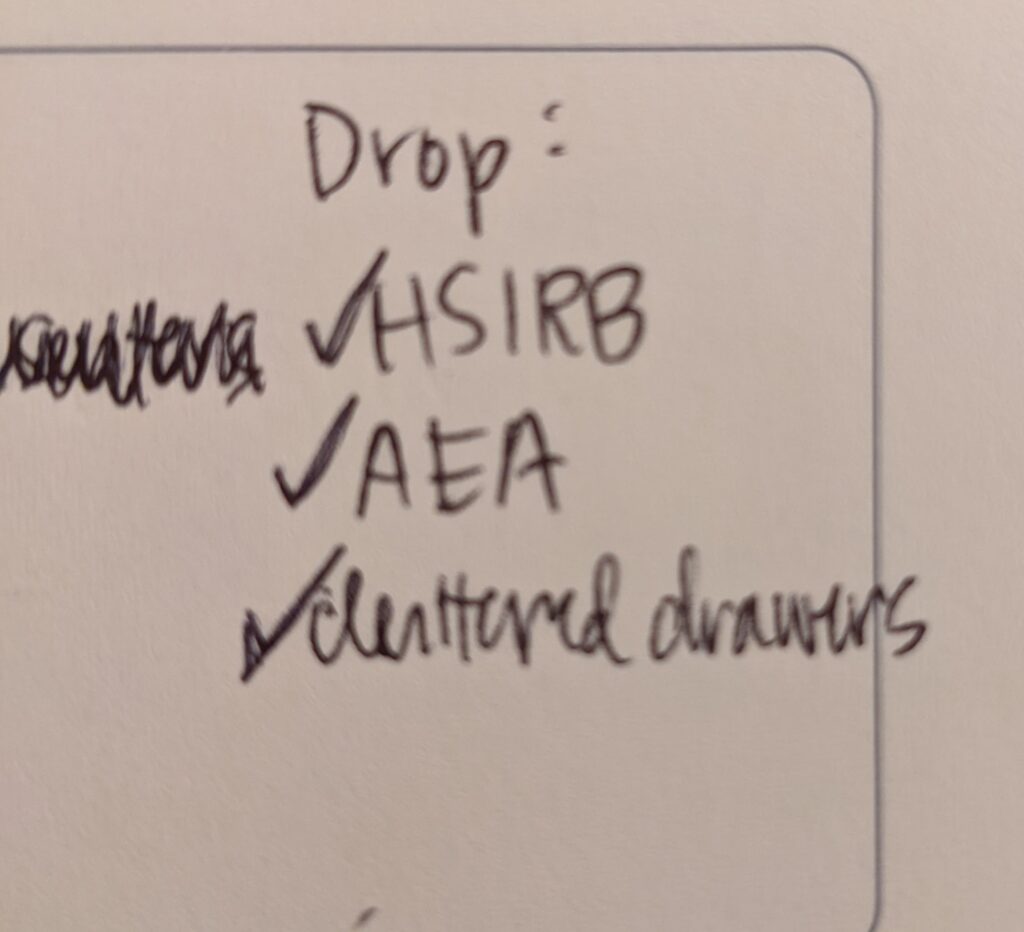
I quit my spot on the local Human Subjects Institutional Review Board (and currently have a ban on all committee work). It didn’t fit the way my career had evolved anymore.
I quit working for the American Evaluation Association, who chronically underpaid me.
And I quit having cluttered drawers because it messes with my peace of mind.
Another year, I wrote:
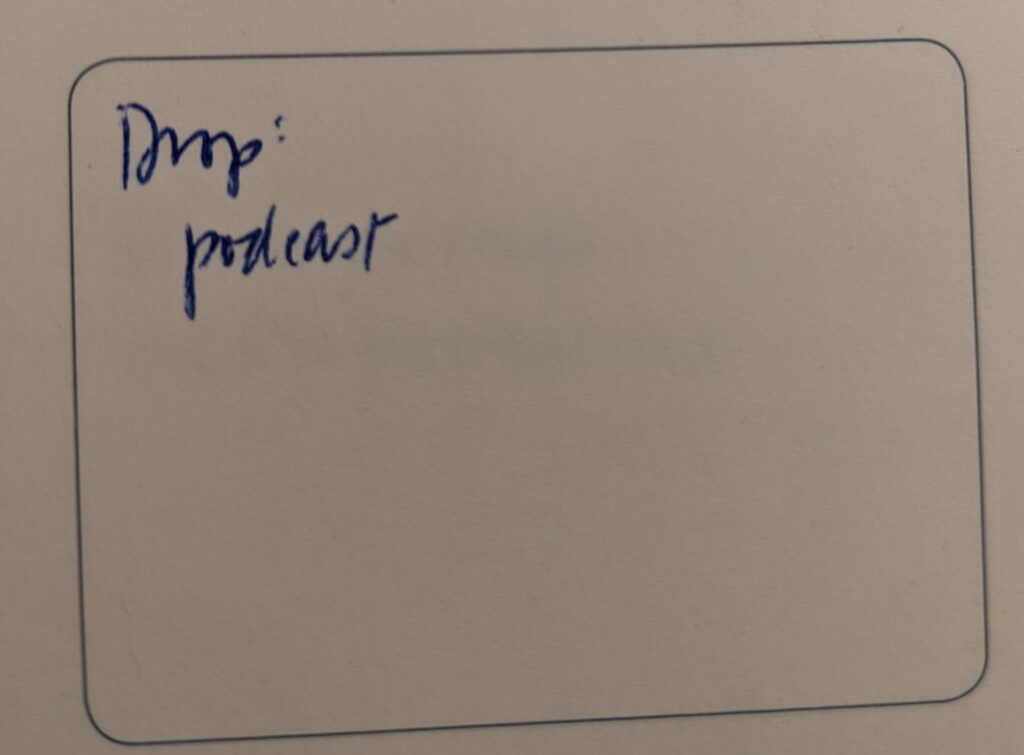
That was the only thing. I quit hosting a podcast. It took up a lot of time and the more I got to know my cohost the more my internal alarm bells were going off.
This quit list came in prep for the year I knew I’d be writing books two and three:
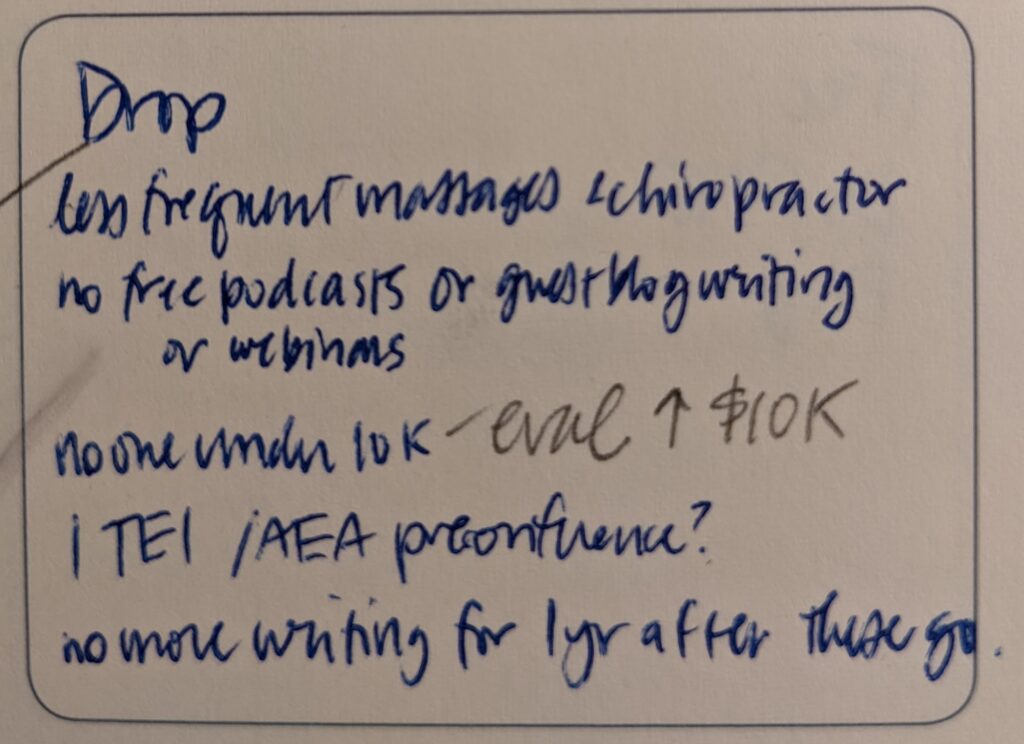
I actually said I’d quit having such frequent massages and chiropractic adjustments! What the hell was I thinking?! It takes me a while to learn from my mistakes.
I quit writing for free on other people’s blogs.
I quit working for small projects, which take just as much admin time as big projects.
I significantly cut back on holding workshops for organizations that paid me far under what I was worth.
And I predicted I’d be done with my post-book recovery after just one year. LOL.
More recently, I quit taking on work with people or companies that don’t align with me. And I quit reading emails from my kid’s school’s PTA – bye, guilt!
Each of your goals should also have a quit buddy.
It’s been five years since I wrote a book. Each year my editor gently asks, in her hard-to-say-no-to London accent, “Can we put our heads together about another edition?”
I’m still not sure I feel ready. It’s taken five years to recover from the burnout.
This time around, I’m not saying yes until I can identify the things I’ll quit.
I’m not willing to sacrifice sleep, personal time, or exercise.
I’m not gonna give up writing you emails or getting into the Boost & Bloom Office Hours to answer your burning questions.
So what is gonna give?
Without a doubt, I’ll lose out on income. Books are not lucrative and I’ll have to quit taking on so many data viz workshops.
And that’s as far as my thinking has evolved right now. Which is why I haven’t answered my editor yet.
The hardest: Quitting what you started.
It’s pretty easy to identify the things you’ll quit that bring you resentment, like that committee. Sooooo much harder to let go of the things you founded.
A Bearing Fruit reader reached out on a different topic but in the process of introducing herself, she listed out all the extra curricular groups she’d launched or was currently chairing. I could see the squeeze those were putting on what she really wanted to do with her time. So this part is for you.
Nobody wants to let go of their babies. Even if it means the baby has taken all your fruit and cut your branches (ever read The Giving Tree? It’s dark!). You’ll feel better about leaving it behind if you send it off with some guidance.
Write up some guiding principles for that group you started. Make a wish list. Develop an operating manual. Then pass it all on to someone else (yes – you give other people leadership opportunities, which is very cool). You get no guarantees that they’ll abide by your instructions. Hope they’ll make your baby even better.
If it dies on the vine – that’s what it was supposed to do. No org, club, interest group, or adventure can sustain on the labor of one person (you, Babe).
You can always come back in five years and run for vice president. And no matter what, “Founder” stays on your resume.
My friend, what’s on your quit list? Shoot me an email with the next thing you’ll quit, as soon as you need to make space.
Batch, Please
Working from home has so many upsides: a 30-second commute, a dress code that includes slippers, and free cat pets all day long.
Working from home also has a major downside: Interruptions.
UPS ringing the bell with another delivery. My partner telling me he’s going out. Even good interruptions like a delicious hug from my teen before he goes to school and that purring cat finding a home on my lap – still interruptions.
When our brains have to switch gears, even momentarily, it takes us a ton of time to get back on track – like 25 minutes to refocus and get back in the groove. For every distraction.
This article from the American Psychological Association says we lose 40% of our productivity when we task switch.
There’s a switch cost.
While I’m tempted to put a KEEP OUT sign on my office door, I have to admit that it’s me. Hi. I’m the problem. It’s me.
Like, just now, in real time as I’m writing this to you, I stopped writing after “It’s me” and sang a little Taylor Swift in my head, checked my email, picked up my phone, read a story about how China says it successfully cloned 3 highly productive super cows, and then stared at the keyboard for a while. Why? I even knew what I wanted to write next.
I think I’m not alone.
We’re all highly distractable.
Our brains are delicate little things. If they start to get overwhelmed, they check out. Our sweet lil brains are actually trying to protect us by being so weak. We can’t totally eliminate this issue. But on the other hand, I don’t really have 25 spare minutes to give up for every distraction in my day.
Our weak brains are why multitasking doesn’t really work. If I’m cleaning my desk while “watching” a webinar, I’m not going to pick up most of what the speaker is saying. Even if I believe I’m listening, as in, I could repeat back their last few words, those words don’t have a chance to land in my heart and resonate. Because I’m divided.
Single-tasking, or monotasking, is always more effective. It’s that seemingly contradictory notion that you have to slow down to make progress. One thing at a time, done well, is more productive and effective than two things you half-ass.
Even though Taylor Swift is still running around in the back of my brain somewhere.
The way to make single-tasking really work for you:
Batch.
Batching means you collect all the very closely related tasks and do them in the same span of time. A single-tasking streak.
Let’s take every entrepreneur’s favorite job: Chasing down clients who owe you money.
Step One: Psych yourself up to address this. That’ll take an hour and a latte run.
Step Two: Open your computer, get into your invoicing program, and locate the unpaid invoices and the date you sent them.
Step Three: Dig through your emails to find the last time you communicated with that client.
Step Four: Write an email that perfectly balances humor and professionalism while thinking to yourself “eff you, pay me.”
Step Five: Reread it five times. Remove some exclamation points.
Step Six: Hit send.
Ok so if you chase one invoice per day, girl that’s your whole morning.
But if you batch your invoice-chasing all in one sitting, you at least don’t have to repeat the costly steps one and two over and over. The time it takes to write the second email will be a fraction of the first because you already did all the hard work (and who am I kidding, I know you’re gonna copy/paste).
I block my batches in my calendar.
Today, for example, is blog writing day. I’m in the zone and I stay here, just writing love letters to you. I don’t have to re-get in the zone for each new post.
Big Boss Time is when I have to make hard policy decisions, write difficult emails, and fire clients.
Follow Up Hour is when I reply to all the folks who contacted me looking for workshops.
Video Day happens because I want to get into full hair and makeup as infrequently as possible.
My brain feels less stressed and more streamlined when I batch my work. Batching reduces the switch cost.
What could you be batching? Give your batch time a fun name and then email it to me.
The Secret to Social Media
Actually, this is the secret to pretty much anything.
Show up. Consistently.
That’s it.
Whew!
The secret isn’t to write 365 homerun tweets that go viral. No one can do that. It’s a bar set too high – so high it’ll intimidate you into never ever hitting Send.
Accept the fact that much of it will be meh.
Like any bell curve, most of your posts are going to be perfectly fine. Some will suck. Occasionally, you’ll knock it out of the park.
Some days I write posts that get hundreds of interactions.
Some days I clearly missed the mark.
Most of the time, my posts are somewhere in the middle. Good, not viral.
By the way, that popular post and that least popular post took about the same amount of time to write. I’ve seen zero relationship between the time you take to develop your social media content and how much it resonates with your audience.
So don’t overthink it. Don’t be a perfectionist about it. Just show up, consistently.
While you’re there, respond to some other folks. That way, you’re showing up in their comments, not solely expecting them to come to yours. Spend 10 minutes on this.
Then get off. Cause too much social media is bad for your mental health.
Same thing for newsletters.
Be there on a consistent basis.
In fact, Steph Smith wrote a reassuring article about how greatness is really just being good, repeatedly.
Consistency is the hard part because it’s soooooo easy to give up when your new podcast only gets 6 downloads. It’s much more difficult to trust the process for a little longer and keep editing future episodes.
Here’s what I mean:
Say you were to visit my data visualization blog and see that my last post was June 2022. And the one before that was from 2021. At your most gracious, you might think “Wow she’s got so much work she can’t even dedicate time to her blog.” But on a typical day, you’d likely conclude that I just gave up on my little side project.
It would be a signal that I couldn’t see something through (like, not only did I give up on the blog but I also didn’t bother to remove the withering thing from my site, like some skeletal succulent abandoned in a windowsill).
But if you come to my blog and see I’m consistently sharing good ideas every two weeks, you begin to see me as a reliable resource. Someone who can be trusted.
Trust builds connections. And connections get you contracts.
Showing up consistently keeps you top of mind. So when your boss says “hey I think it’s time we get some data visualization training” I’ll be the person you think of because I’ve shown up in your inbox with good ideas every two weeks for years.
Yep, it’s a long game.
But you can’t show up consistently everywhere, all the time. You can’t be running 100 different long games. That’s a burnout maker.
Which means you have to be choosy about where you want to put your energy. Pick one direction. Put it in your calendar. And go.
What have you chosen? Where are you showing up consistently and playing the long game? Send me a link so I can ride shotgun.
No Regrets
This is going to sound like a bummer way to start but hang with me, it’ll be brief: My grandma passed to the other side recently. You don’t need to email me with condolences. It’s all good.
I didn’t realize, when I hung out with her the night before, that I’d be the last one to speak to her. She was retrospecting on life. I asked if she had any regrets. She broke out into a big smile and then fell asleep for a few minutes.
The same day I was visiting my grandma, Big Think published this article on the Harvard Study of Adult Development. The Harvard study and several others that track humans for decades produced similar findings: Life happiness is found in the quality of our relationships.
You’ve probably heard this before. If you’re like me, you’re already thinking “yeah, yeah,” with your hand on your mouse, ready to go scroll Instagram. Hold on.
If you want to be satisfied with your life, you’ve gotta invest in your family and friends. This is terrible news for people like me who have a hard time making new friendships as an adult.
The Big Think is careful to clarify that loneliness, which is what kills you, is “people who are more isolated than they want to be.” So if you LOVE being by yourself, do you, Boo. That’s a little freeing, right?
As long as you’re being honest.
If you think you’d like to be a little less isolated, let me tell you what I’ve been noticing.
People place bids.
Bids are tiny little invites to connect.
Perhaps a decade ago, I got new neighbors. They were from Montana. They raised backyard chickens that we’d watch when they went home for the holidays. She worked remotely and when she found out I was also typing away in my house all day, she said “Hey if you ever want to take a work break, hit me up and let’s go for a walk or something.”
Looking back now, I can see that was a bid.
I never took her up on it. I wanted to, sure. But there was always some Pressing Work Thing I needed to attend to instead. That’s what serious CEOs do. They don’t just vacate the office when there are Important Emails to be Answered.
A few years ago, they moved back to Montana because they missed the community.
Now I’m not saying I could have changed the course of their lives or something, but I definitely could have closed the laptop and enjoyed the company for 45 minutes once a week. You walk with someone for 5 years and you form a bond. (Also, just sayin, I coulda used the exercise.)
Work will always be there. The opportunity to create those life-satisfaction-building-connections will not.
I missed the bid and I regret it.
Now I look out for them and I intentionally bid all over the place. Lunch on Friday? Yes please.
Happiness requires a mindset shift for entrepreneurs.
There’s a very American work ethic we’re subscribing to, whether or not we’re aware of it.
Work hard now for future rewards.
Nose to the grindstone gets you a massive nest egg and a glorious retirement. Right?
Except whatcha gonna do with all that money and free time? Hang out with… who, exactly? Those friends you never nurtured along the way?
Please be cautious of promises of future reward.
Shifting our mindset would look like:
Blocking out four weeks of vacation in the year, even if you don’t have a destination in mind, even if you just stay home and enjoy the quiet time. Pick whole weeks or block out every Friday. You’ll figure out what to do with the vacation days, trust it.
Scheduling friend dates during the “work day.” Go for that walk, hit up that Indian buffet. I promise, you’ll feel like you had a good day.
Eating on the good plates and drinking out of the good cups. I know you normally reserve those for special occasions but I’m confident you can find something to celebrate every day, if you look for it. Today I finally took my dress to the tailor. Celebrate your accomplishments!
Giving people their flowers, while you can. Don’t wait until your colleague tells you she’s quitting to say “Oh shoot, I really like working with you.” Tell her now. Glow up that professional peer on your socials. Take a deep breath and tell your grandma exactly how she made your life better.
Let’s have faith in the fact that this isn’t going to turn into some YOLO sprint to bankruptcy court. You’re committed to growing your business and building a legacy.
It’s just that the legacy we leave for the next generation shouldn’t just be a big bank account. It should also be an example of a life well lived.
My Multi-Year Mistake
I am absolutely kicking myself. I totally messed up and accidentally put myself in the middle of a poop sandwich that I’ll have to eat for years. Come ugh with me.
Rewind a couple years (yes please we were so innocent then). A long-time client I hadn’t heard from in a beat asked for a new contract. Cool, right?
They’re government, which means we cut down 10% of the Amazon rainforest to generate the paperwork necessary to get a contract in order. It takes months, notaries, and alllllll your patience.
So three months into working together, the contract person emails me like “Hey I think we have a beautiful future together. What’s say we extend that onerous contract by a five years? It’ll be an easy 1 page extension form and it’ll keep us from having to steal endangered macaw habitats next time around.”
Sounds like an easy yes to me! I signed away.
That was my mistake.
Because, my friend, the contract documented my rates.
And I had just committed to charging those rates for five years.
Rookie move.
Had I known it would be a five year contract when I was originally negotiating, I would have stipulated a % increase each year. But because I was contracting for one short term project, annual increases weren’t even on my radar.
Matter of fact, I didn’t even catch my mistake when the extension was finalized. Nope.
It was only recently, years later, when someone at the company reached out with a request for work and referenced a price agreement that was from pre-COVID olden days, that I realized how much I screwed myself.
I shrieked. I shuddered. I wailed like a toddler.
My rates are far from where they were five years ago – and yours should be too.
Look, I’m not a gold digger. It isn’t all about the money.
The concern is really about the resentment I felt as a consequence of my mistake. It was my own damn fault. But it still put a chip on my shoulder that would inevitably impact the quality of the work. And that’s not how I want to be in the world.
I bet you’re wondering how I handled it.
Well, my saving grace was this: Their timeline was immediate and my plate was full of other work. I was able to decline on those grounds.
But that won’t be the case for every minute until the agreement expires.
In the meantime, my work is to (1) get right with the fact that I made this bed and I’m gonna have to lie in it. And (2) build a check into my systems to prevent me from signing extensions without amending the price structure.
Have you been here too? Where you got yourself stuck in a tough spot and you’ve gotta just deal with it? Help me feel less alone and tell me about it.
Delight is in the Details
In lil downtown Kalamazoo, just a few blocks from my house, is a store full of delight. Rocket Fizz sells candy and soda (or, if you were actually born and raised here, it would be soda pop).
Some of the sugar bombs are retro, like you can find the abba zabbas I ate as a kid. Some of it is just weird, like bacon soda (with chocolate).
You can’t help but chuckle at the whimsy. The chuckle makes you want to take part. You’ll buy something, even if it’s just a candy for a quarter. Even if you’ve sworn off sugar – you’ll get a gift for a friend.
When the cashier rings up your sugar haul, they’ll put it in this bag:

Makes you chuckle, doesn’t it?
This isn’t some plastic bag covered in Thank You Thank You Thank You that’s gonna choke a duck some day.
It’s the kind of bag you post on IG and show off to your friends. Which means you’re advertising for Rocket Fizz for free. Like I am right now.
It’s genius.
While some people think the devil is in the details, delight is there too.
The details are where you show off your personality. And personality is what makes you different from every other plain vanilla “competitor” that’s out there.
Details also give you a chance to communicate your values.
Over on my data viz blog, you’ll find a spot to get on my newsletter email list. Here’s what it says:

That “That would be gross” line? Literally *dozens* have people have written to me to say it made them smile. Like, they took time out of their day to write me an email and tell me this. That, my friend, is delight.
I wasn’t trying to be cheeky. When I wrote those words, I was just keeping it real. Those words are my values and my personality.
For me, this is one of the primary reasons that, as an entrepreneur, I don’t outsource much. Other CEOs have definitely advised me to delegate more. Why, they ask, with my hourly rate, am I bothering with the details like the copy on the sign up form?
It’s because delight is in those details. And personality is hard to replicate.
And speaking of replication, you absolutely cannot head right over to your own sign up box and add “That would be gross.” You 100% are not allowed to go get bags printed that say “This is full of vitamins and veggies.”
Because that is not your personality.
If you want to weave more details into your own details, here’s what you gotta do:
Go on a customer journey. Pick a specific task that a typical customer would want to complete, like “Contact the CEO to see if they’re available for a keynote.” Then go through the task process, as if you don’t already know the ins and outs of your website (that part can be hard – get a friend), and look for the places you encounter along the way that could be an opportunity for a little delight.
And keeps your eyes open for places you encounter delightful details in your own day to day, even if it’s entirely unrelated to your own field.
Like, what little things make you smile and endear you just a little more? Email me with some ideas.
For me, it’s the mints they give out at Olive Garden (my kid’s favorite restaurant) at the end of your meal.
The specific way Alamo Drafthouse tells you to turn off your effing phone before the movie starts.
It’s the freebie postcards that come in my Moo order that say things like “You’re better than chocolate cake.”
Take note when you feel delight and then think about the corresponding part of your business and what opportunities you have there to show people who you really are.
What You Need to Start a Business
This issue is about the third question budding entrepreneurs ask me.
The first question is “How do I price myself?” which is understandable but the wrong place to start.
The second question is “How do I find clients?” which is actually what seasoned entrepreneurs need to be asking, too.
The third question is “What do I need to start a business?” and it’s the same thing I still need every day after running my business for 13 years:
Grit, tenacity, and an unwavering trust that you’ll figure it out.
Contrary to popular belief, it is not a six-month runway of savings.
While that’s comfy, sometimes it’s actually TOO comfy. The pressure of a rent payment will light a fire under your tush and activate your tenacity in a way that nothing else can.
That route is not exactly for the faint of heart. It’s just to say that you do not need investors to start or grow a business.
If you don’t have six months saved, you will find out how efficient you can truly be.
You also don’t need to have a stack of clients lined up.
I promise that a lack of clients will force you to put yourself out there in a way you wouldn’t if you were being safe. And even if you get rejected by your first 10, each one of those rejections is a rich lesson in what you need to tweak ASAP.
You don’t need rich parents.
You don’t need to look like Elon Musk, Mark Zuckerberg, Jeff Bezos or any of the other privileged people who seem to have it easy.
The adversity you have faced in your life is your strength. It’s where grit comes from. Grit is what you need to keep going when you get that 10th rejection.
Don’t get me wrong, getting comfortable with rejection is no pizza party. I’ve had more fun writing out my will.
Even these days, 13 years into starting my business, I still have dreamy potential clients turn me down.
You wanna know what helps? Normalizing it. Take a deep breath and email me about your last rejection.
You bring your grit, tenacity, and unwavering trust. I’ll bring the support.
Hate the Idea of Marketing?
The hard truth about being an entrepreneur is that you simply cannot escape marketing.
Yet the number one thing I hear from entrepreneurs, whether they’re just nurturing the seeds of their business or they’re actively rooting, is that they hate sales and marketing.
Well, they say they hate sales and marketing. Because this is what comes to mind 👇
Entrepreneurs think that sales and marketing is going to make you compromise your morals. That you’ll be bugging people. With things they don’t need.
You think sales and marketing are misaligned with who you are as a person. It’s gross.
So, people avoid it. And then one of two things happens:
1. Their business folds. Without clients, you have no income and without income you have no business. You simply have to tell people about the services you offer. There’s no way around it.
2. Their business chugs along at a steady pace. It pays the bills. You have repeat clients. Sure, they may refer you to a colleague. But it feels pretty stale after a couple years because you’re working with essentially the same people on essentially the same project.
Some folks will go their whole careers in lane 2 – working harder and harder every year because you can’t really raise your prices much if you have the same clients and the same projects on repeat.
I want more for you. I want you to attract the clients that make your heart sing. And I want you to be able to say no to the clients that make your guts feel bad.
My dream for you is that you spend your life supporting projects that align with your soul and pay you what you’re worth.
The way to get there… well, we’re gonna have to talk about that hard truth. Here it is:
Marketing is the #1 thing you need. No matter your stage of entrepreneurship.
Before you throw in the towel and start scanning LinkedIn for salaried job postings, come to my class.
Let me show you how to market without feeling skeezy.
Oh snap! This class is already over. Hey, keep an eye out for my next free class cause these are a blast and you learn a ton.
I pulled a lesson from my online course, Boost & Bloom.
Boost & Bloom is for entrepreneurs, at any stage, who want to build a business with integrity at the core. Enrollment is closed by you can get on the VIP list for first dibs next time I open the doors.
We talk about marketing without being gross a LOT.
In last year’s cohort, one of my students sent in this question for our live Office Hours call:
“I am bad at selling things. I feel this is holding me back in my business. Do I have to hire a marketing agency??? That feels expensive.”
When I explained to this student what I’m going to show you in my upcoming class, she smiled.
Her shoulders fell away from her ears.
She sat up a little straighter.
Her face brightened and she said “oh I can do that.”
Yes. Anyone can.
Hello My Fellow Perfectionist
This is the life hack that allowed me to complete monumental projects, like launching a business, finishing a dissertation, publishing books, giving birth. You know, the stuff that’s really freakin hard. Emotionally, mentally, even physically. The stuff that shifts the course of your life, if you can just actually see it through.
The life hack is:
Done is better than perfect.
Perfectionism often comes from growing up in a culture where your flaws got a lot more attention than your triumphs.
This doesn’t even have to be something that happened within your household. Just existing as a woman in the United States exposes you to the circumstances that can lead to perfectionistic tendencies. White culture, especially, values flawlessness – as if it’s possible.
If you’re told on repeat that you’ve fallen short in some way, you course correct. You raise your standards (because obviously they were previously way too low or you wouldn’t have had a flaw) and you become a hypervigilant monitor of yourself.
You’ll catch those flaws before anyone else notices them.
As a recovering perfectionist, I’m not gonna lie to you. Character traits like high standards and attention to detail have both prevented mistakes (like marrying that one guy who my friends hated) and driven many successes (like having a baby while finishing grad school).
But when you don’t reign it in, perfectionism actually keeps you stuck in a standstill.
During dissertation days, Done Is Better Than Perfect played continually in my head. Because my perfectionism would have me thinking, “I bet there’s one more journal article out there that would really take my literature review all the way to the top. If I don’t fill this gap in my chapter, my committee will notice and I won’t pass, journal reviewers will reject me, and all this work will have been for nothing. Let’s head back to the library and dig for a few more hours.”
Those thought and behavior patterns are fine once or twice. But when you’re doing that on the daily – that’s how you never finish your dissertation.
Too afraid my weakness will be exposed, so stay in “development mode.”
If I don’t move, nobody will see me. Yet that’s the problem – nobody will see you!
To make great things for this healing world, you have to be seen.
You have to risk that there’s a typo somewhere in the manuscript you haven’t caught.
Indeed, after I wrote my first book, I got emails from eagle-eyed readers who said “on this page you said x but on that page you said y,” or “on page 50, you wrote it’s when you should have used its.”
A perfectionist’s worst nightmares, come true.
And that’s after I read every word. Multiple times. As did my editor. And a copyeditor.
So it goes.
Those tiny errors don’t take away from the book’s impact. In fact, every email about a tiny error also said things like “I love this book so much, I’m absorbing every single word. This is changing my life.”
The thing is: Your perfectionistic cultural upbringing means you won’t put crap out there in the world. Your high standards will always prevent you from doing so. It’s going to be good. You produce quality. Even if there’s a typo.
So just focus on getting it done. Of course, give your work one thorough review (how could you not). Then hit Publish. Send the email. Launch the reel. Just go.
The world is waiting.
Security is an Illusion
The day I got called into a meeting with HR, I realized security is an illusion.
My boss was upset that I had started blogging. I had, in fact, blogged about an issue we had on one of our projects, though I didn’t name names or publish anything identifying.
If he had foresight, he would’ve seen my blog as a potential opportunity to market our work. To position us as thought leaders. Contributing to the field’s discourse.
After all, it’s that blog that led to my books, which grew my consulting business, which got me to where I am today, which is pulling in 20x what I used to make when I worked for him.
But I’m getting ahead of myself.
My boss and someone from HR told me that if I didn’t delete my blog from the internet, completely shut the whole thing down, they’d write me up.
I was confused. We’re at a university. What does a write up look like? What are the implications?
HR said the write up would go in my permanent record.
I sat there, waiting for them to tell me the consequence. Then I realized, “Oh that *is* the consequence.” As if I care what’s in my permanent record. You’re talking to the girl who skipped 27 days of the first semester of my senior year of high school.
As I tried to suppress my laughter, I realized this whole thing was flimsy.
I already worked, alone, to bring in grants and contracts that paid for my salary. And covered part of all the admin salaries. Including my boss’s salary.
I brought in more than enough money each year to pay my way but a few weeks earlier my boss had still announced, to everyone, that if there was ever a gap in our grants, like if one didn’t start for a month after a previous grant ended, we wouldn’t get paid. Even though we were salaried employees.
I’m tellin ya, the blog threat was the ace on the top of what I could now see was just a house of cards.
There was no security there for me.
The desire for security is what keeps some people content to show up day after day, wearing the same khakis, pushing the same buttons, having faith that the work will produce a paycheck that will keep them safe.
Security is what keeps people with good ideas from becoming entrepreneurs.
I get it. But it’s a myth.
Stripe just laid off 14% of its workforce.
And the list goes on. Most of those folks probably thought they had security.
But your job doesn’t love you, no matter how loyal you are to it.
It’s only after I started my first business that I realized entrepreneurship is the most secure path.
The only thing I can rely on, for sure, is that I can go find another client. If I have a bill to pay, I have the autonomy to say yes to another project, put money in my pocket, and pay that bill.
I can’t get fired. There’s no permanent record.
No one can tell me not to market or network or make a pitch.
Security is knowing that I construct my future.
The reality is both self-employment and other-employment can be insecure. It’s just if you’re self-employed, you can do something about it.
So don’t let the false comfort of security keep you from launching into your dream job.
Sure, there are a lot of unknowns. In my Boost & Bloom course, we articulate every single thing you need to know. We walk you through every decision.
You gain confidence. And clarity. And security.
Boost & Bloom is closed for enrollment right now but get your tushy on the VIP list and you’ll get first access next time around.
Small Projects are a PITA
Sarah posted in our group chat “Ok, I have to admit, I underestimated the budget for this project. They didn’t have many funds and the scope was reasonable… but the admin! I’m spending almost as much time doing admin tasks as I am actually working on the project.”
Yes, my dear Sarah. This is why small projects are a PITA (one of the only acronyms you actually need to know).
I’m not saying you should never take a small project, so don’t hit reply and email me in all caps just yet.
Small projects are often the ones that steal your heart.
They’re that local non-profit that you’ve always loved. They’re the scrappy folks, just like you.
You’re in solidarity. So you say yes.
Then you engage in the same tasks you have to do for any project, no matter the size, aka, the administrivia.
Administrivia is all the little stuff that isn’t directly about providing the actual service.
Paperworking.
The contracting.
Plan development.
Client hand-holding.
Filling out the time sheet.
Sending updates each week.
Getting into the vendor system.
Scanning receipts for reimbursement.
I’m allergic to administrivia.
And the thing is – it’s essentially the same for all-sized projects. Which means when the project is small, you spend a ton of time, relatively speaking, on the administrivia.
That’s usually the stuff we don’t account for when we’re looking at our calendar and thinking “yeah, I can take on that small project.”
The extra bonus sucky part about administrivia is that it isn’t the stuff that lights us up. Our hearts glow when we’re actually working directly with the client, not when we’re chasing down payment on the overdue invoice.
When we spend hours each week on administrivia tasks that we don’t love, we feed the resentment monster and put out the welcome mat for burnout.
I got an email from someone in response to my 5 Projects advice, saying she is *happy* to have 15 small projects at once.
I’m definitely not trying to call anyone out, so I won’t share any further details. You’ll just have to trust me when I say that the tone of the email was like this:

Her burnout was evident. Even if she truly loved each of her 15 projects.
Let’s say you’ve got 15 small projects right now and you need to find a way to reduce the effort while still fulfilling your scope with the quality you’re known for. Here’s what you can do.
Cut down administrivia.
- Reduce paperwork, like charge a flat fee instead of getting reimbursed and having to scan and email receipts.
- Be honest “The size of the budget for this project doesn’t allow for x. If you need that level of administrative oversight, we’d need to find more funding.” And sometimes they will! But often they’ll say “Ok no prob.”
Consolidate efforts.
- Is there a way you could turn this into a group thing? Like if you have several small projects and they all need a meeting about why you collect survey data in a specific way, can you get them all on the phone at the same time? If they all need a monthly update, can you schedule one 1-hour Zoom and assign each person a 15-minute slot? Can you negotiate to ditch the monthly update altogether? (After all, it’s easy to argue that a monthly update is administrivia.)
- Use this as an opportunity to build some systems. Are you writing the same messages over and over? What can you begin to copy/paste? Are you going for a 45-minute walk to psych yourself up for writing those emails asking when to expect payment on the invoice? Batch invoicing – write those emails all in one sitting.
Shoot bigger.
- Start talks about phase 2 or contract extensions right now. Maybe you can turn this into a bigger package.
- Seek out the funders, who can support your technical assistance for lots of their small grantees, but under one funding umbrella.
- Aim for 1-2 big projects to replace a few small projects. That way you aren’t completely ditching your tried-and-true bread-and-butter. But you’ll get a better balance. I promise, you’ll find heart-stealing projects that are bigger, too.
What else could you do to cut down on administrivia and make small projects more viable? Any ideas? What’s your least favorite administrivia task? Email me.
It can feel scary to level up your game and start going after bigger clients. Can seem like you’ll lose your soul if you do. In Boost & Bloom, I’ll teach you how to grow with your soul intact. Enrollment opens February 1. I’ll open the doors early for people on the VIP list – and give ya a discount. Get on the VIP list here.
Pivoting? Here’s the Trick.
I love a good career pivot. The bigger the pivot, the louder I cheer. Probably because I’ve done so many 180 pivots in my lifetime.
Pivots can be scary because it feels like your gonna burn the house down and start over. But, I promise, you’re only doing reno.
I watched Siobhan 180, from being an evaluator to becoming a realtor. You used to collect data! Now you sell houses! I love it!
And, now that I think about it, I’d prefer a realtor that understands data and forecasts and trends. Wouldn’t you?
Coming from a data background is an asset.
A selling point.
Let’s say you’re in academia and you want to start your own business as a personal trainer. That’s a 180 pivot. Rad!
I suspect you might feel scared to make such a huge move because (1) you think people will think you just failed at academia and (2) your reputation as a personal trainer is non-existent. You’re starting from scratch.
But are you?
No, my friend. You have related experience. Lean on that.
See what I mean?
Your lunch time workouts in the student rec center, where the ventilation and air conditioning have always been so-so. That’s related experience.
Your “summers off” hiking mountains. Those become part of your branding.
All academics are essentially running their own businesses out of their tiny offices. You know how to budget. You know project management. You’re already used to putting in long hours, trusting that the far-distant payoff will eventually arrive.
You’ll be fine.
Don’t hide your past like it never happened.
Put it on the front page.
Indeed, part of what makes my data visualization workshop so effective is what I learned from my early days as a kindergarten teacher.
Like classroom management skills, to get hundreds of people to stick with me at the same time.
And curriculum design, to know how to make the content engaging.
And emotional intelligence, to sense when a particular group needs an activity or a break.
AND OF COURSE MY TEACHER VOICE.
Part of what made me an effective teacher was what I picked up waiting tables at the neighborhood pub in college.
I got good at seeing what people need before they see it themselves.
I learned all about smiling on the outside while thinking “go f yourself” on the inside.
All waitstaff have outstanding multitasking skills – and all teachers need these, too.
And the talents I learned waiting tables, I use in my data visualization work now.
Your pivots don’t have to be so big.
Maybe you’re thinking about just a 45 pivot – offering a new service.
Let’s say you’re a social worker who wants to start a podcast. Awesome!
You’ll pull from the patterns you’ve seen among your clients to develop the content.
You’ll get ideas for each episode’s structure based on the podcasts you already listen to when you take Pixie for walks.
Yes, you’ll have to figure out a few logistics like what type of mic to buy and how to edit – but those are just logistics. You’ve already got the hardest parts under control.
No matter the size of your pivot, you have the skills and talents and experiences that’ll bridge you.
You aren’t ever starting from scratch.
Sometimes we need help identifying our bright sides and how they’ll contribute to our next move. I can help. I learned how to pull out the best in everyone when I was a teacher. If you need an outside perspective on how to pivot, shoot me an email.
And enroll in Boost & Bloom. I’ll walk you through the logistics, step-by-step. And the whole community will cheer you on.
So, what did you learn from a past job that is surely contributing to your awesomeness in your current job? Email me about it. Then use that experience as your evidence. You’ll be good at this.
How To Launch a New Offer
My friend, this isn’t my first rodeo. I’ve launched several businesses, each one hitting six figures right out of the gate.
So you’d think I’d have the launch process totally figured out by now. While experience did help me foresee some steps I’d need to take, I still fumbled and it took me way longer than necessary.
As usual, I’d love for you to learn from my mistakes.
So here’s the diagram of my last business launch. Whether you’re launching a totally new business or just looking to sprout a new branch for your existing business, you’re likely to run through the same phases. Though if you look carefully at my mistakes, you can probably do it faster.
LAUNCH PHASE 1
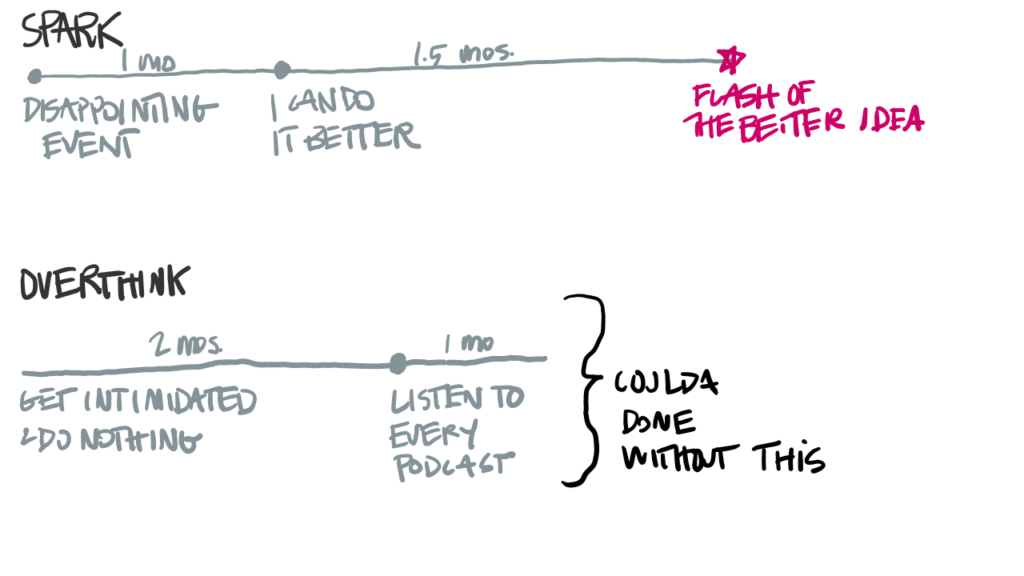
I truly believe most businesses are born from frustration. When we find ourselves engaged in something so poorly executed, we’re like “I could totally do this better.” In fact, a lot of armchair consultants on Twitter pull inspiration from this very place. Your hyper critical friend lives here and has a dozen new business ideas every day.
Nothing much beyond grumbling typically happens – until the flash of a truly better idea comes, along with the details that make it a viable product. I had fluorescent flashcards and a notebook and a lightning bolt at 3am that helped me hammer out the product and the plan.
Then I entered the likely avoidable span of time where I overthought it. The plan was awesome. My experience told me it was going to take me a lot of time and energy to turn it into reality.
And then I questioned myself.
Where would the time and energy come from?
Did I actually even want to do it?
Would people buy this product from me? Who, exactly?
Haven’t a bunch of other people already done this? What makes me think mine will be better?
I know what’ll help me answer these questions: Listening to every single possible business coach.
Geez that was a huge waste of my time.
You’d think, by now, I’d know not to let these thoughts distract me. Maybe this stage is unavoidable. Yeah, maybe we all have to go through it. But it doesn’t have to take as long as mine did. And we can feel these feelings while also continuing to make progress. Without letting those self-doubting thoughts freeze us in place.
LAUNCH PHASE 2
The key to getting out of the self-doubt whirlpool is to focus on the people you want to serve.
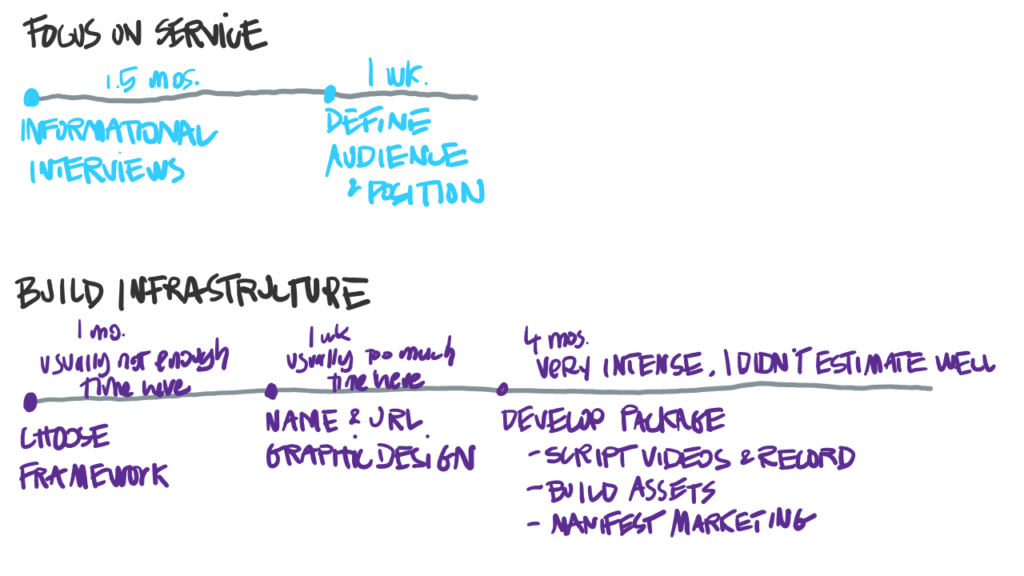
They have needs and they don’t have time for you to mess around.
In my case, I have new and seasoned entrepreneurs in my DMs nearly every day, asking to pick my brain for 15 minutes. I said yes to a few of these folks, seeing it as an equal exchange – I’ll give advice and they’ll teach me about my audience.
Once I had my audience figured out, I started to build the business’s infrastructure, with those particular people in my mind at all times.
I sorted out the framework/structure/package for my services. This is the part most people skip cause they don’t know they need it. But you have to create the container. Give it a name.
Then I brainstormed the business name and connected with my web developer to (1) figure out if we could even do this, (2) research URLs, and (3) start the build.
People usually spend too much time in this phase. They’ll create business cards and deliberate over the web site design and consult 800 people about their business name…. and then never actually launch. Don’t get stuck here.
Then it came time to actually build the program. I had to write out my curriculum – which ended up taking me much much longer than I had planned. The amount of solid business advice that had been just rolling around in my gray matter – honey, the curriculum was longer than any book I’ve ever published.
Took me forever to get it all out of my head.
At the same time, I was planning the marketing strategy, coordinating with my web guy, and shooting the videos. This was a super intense time that I wish I had been able to spread out more.
LAUNCH PHASE 3
Phase 3 is go time.
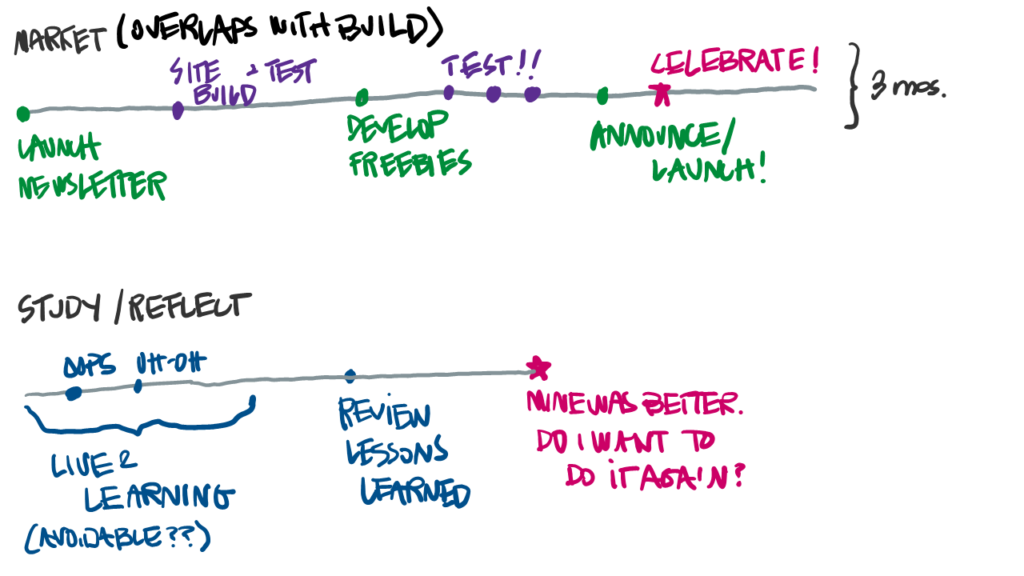
I launched with a newsletter (hi! This one!) while I was still finishing the website build and testing everything.
I developed some freebies while still testing everything.
Then I announced the new program and opened enrollment. The hard work is supposed to be done at this point so I make it a priority to celebrate with my friends and family.
However, students were unearthing issues we hadn’t found in any previous testing. I don’t know how. But this seems to happen every time I launch. And I think it may be unavoidable? This is why restaurants have soft launches. Maybe we all need our own version of a soft launch.
Every step of the way I’m making mental note of what worked and what didn’t. I formally collect all of those thoughts in a debrief session with my project notebook. *IF* I’m gonna ever do this again, there’s no freakin way I’ll remember every single tweak I’d want to make unless I write them down while they’re fresh in my mind.
Then I chew on those lessons learned while watching student successes and monitoring my own mental health and it’s those things together that lead me to the final point in the process: Do I want to do this again?
And I do.
I’ll open Boost & Bloom again in Feb. Get on the VIP list for early access and a discount.
I’m already thinking about another business, too. I’m in the “I can do it better” stage. This next time around, I’ll be on the lookout for the tedious overthinking stage and do my best to skip it.
I hope you will, too.
What stage are you in? How long are you giving yourself until the next stage? Do you even know what your next stage is? Email me with a note about where you are right now.
Your launch doesn’t have to look like mine. But please at least consider my sequence of steps and my mistakes and make adjustments to get to your next launch faster, better, stronger.



